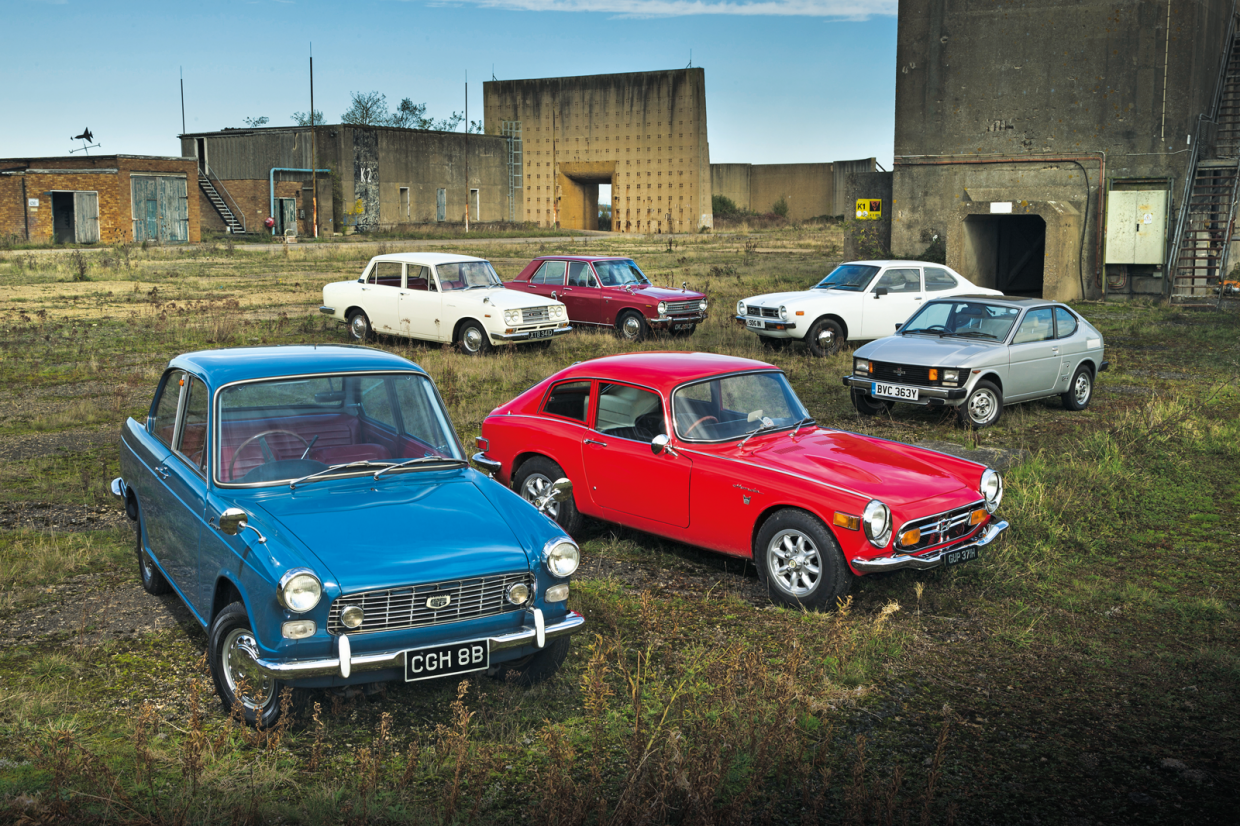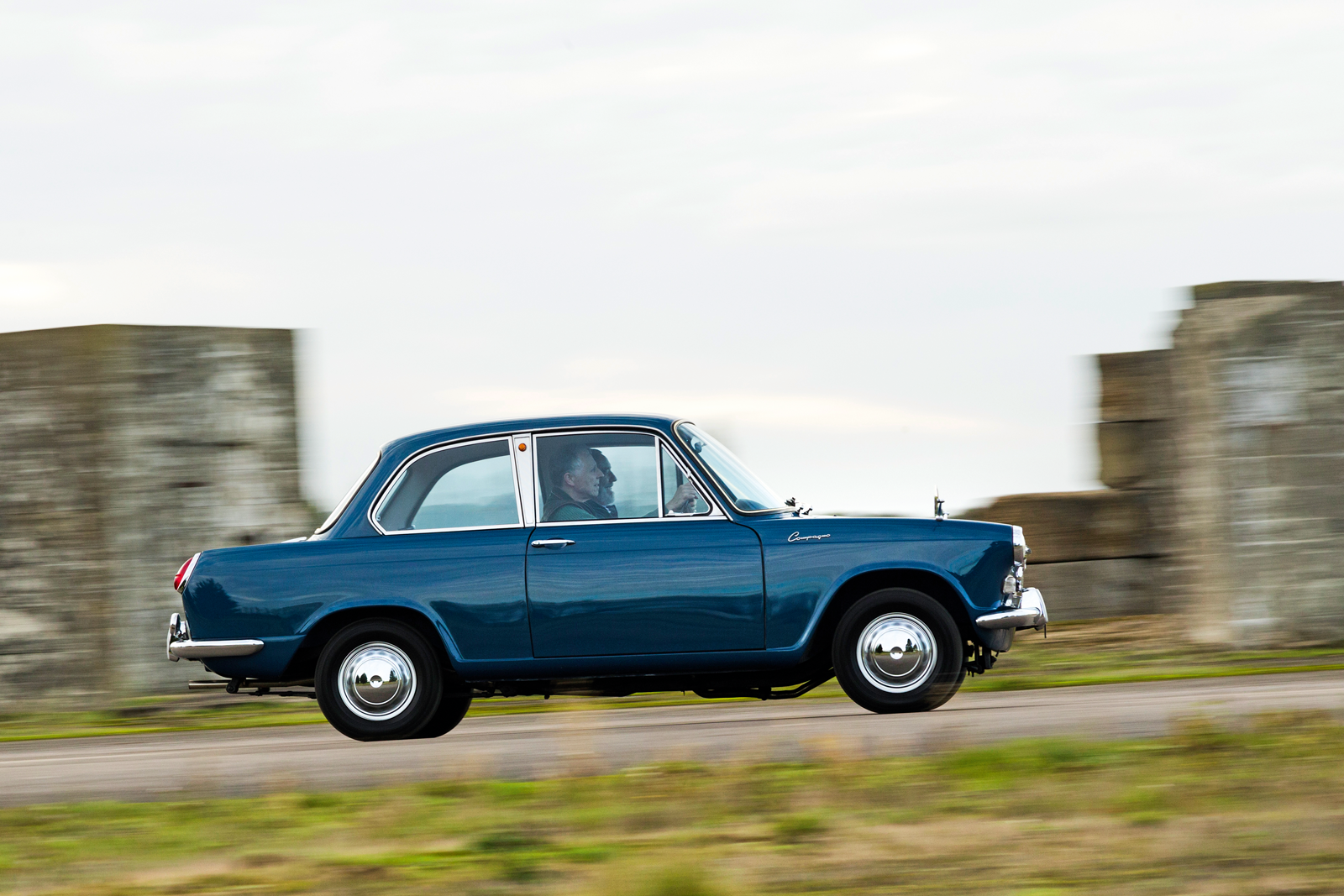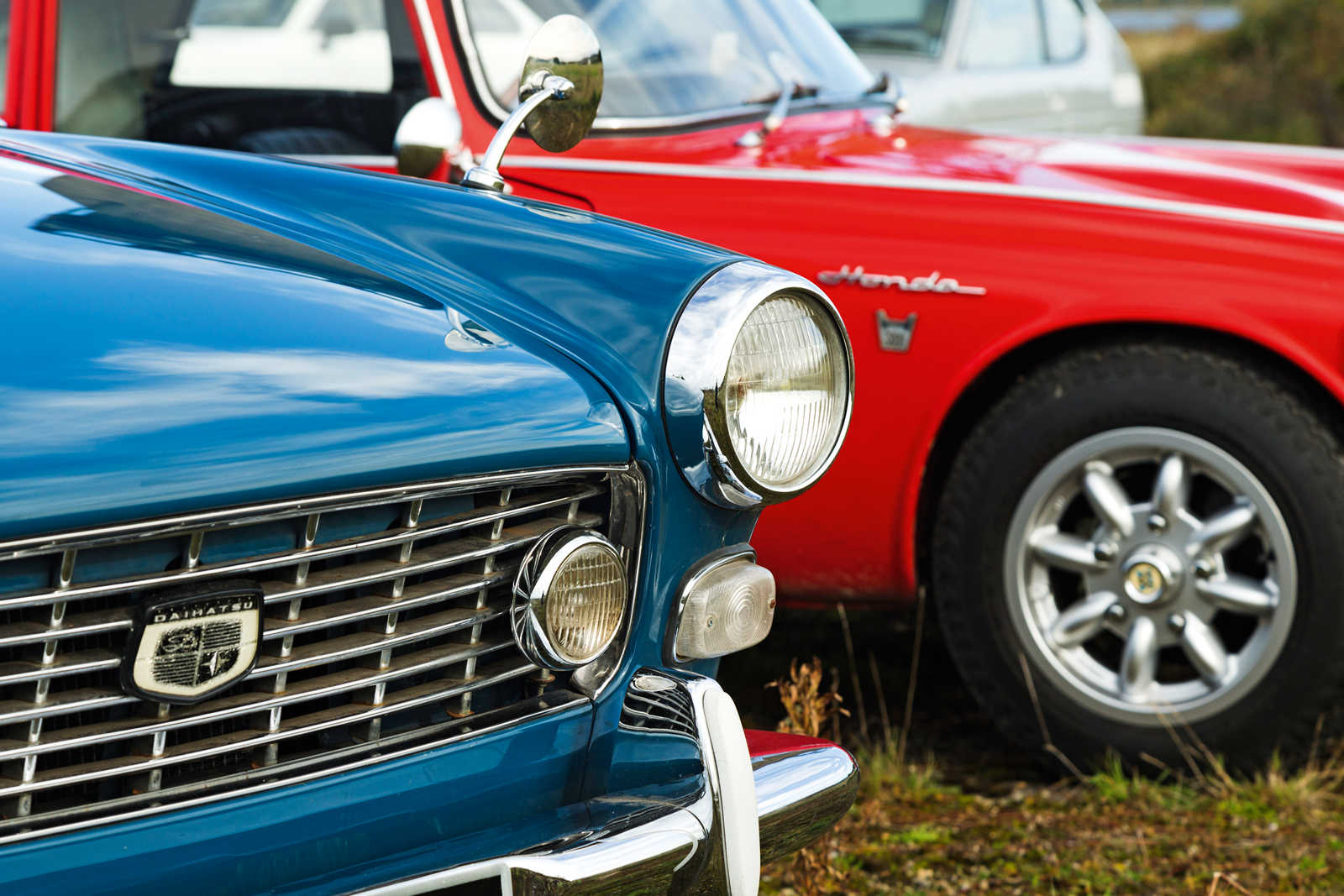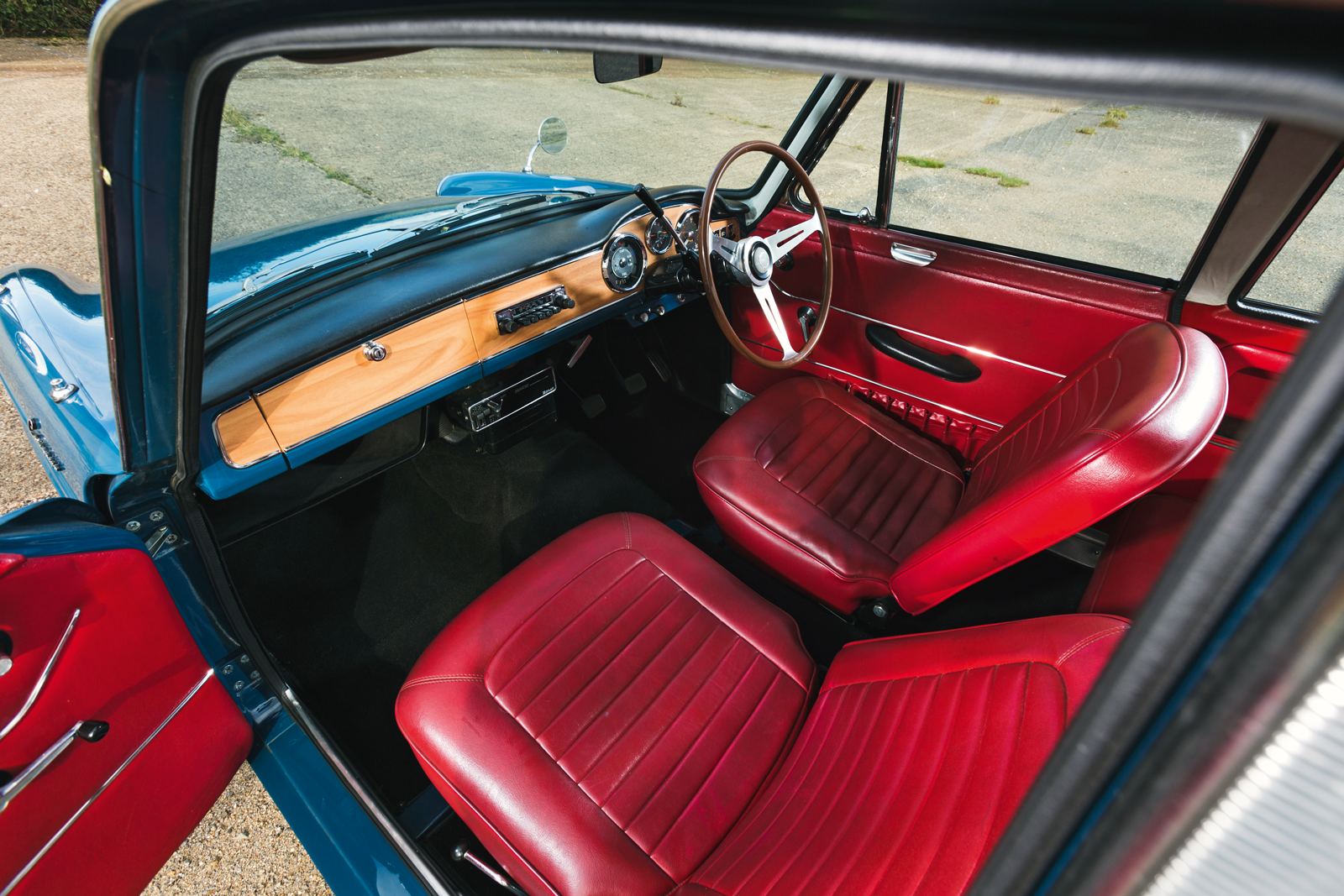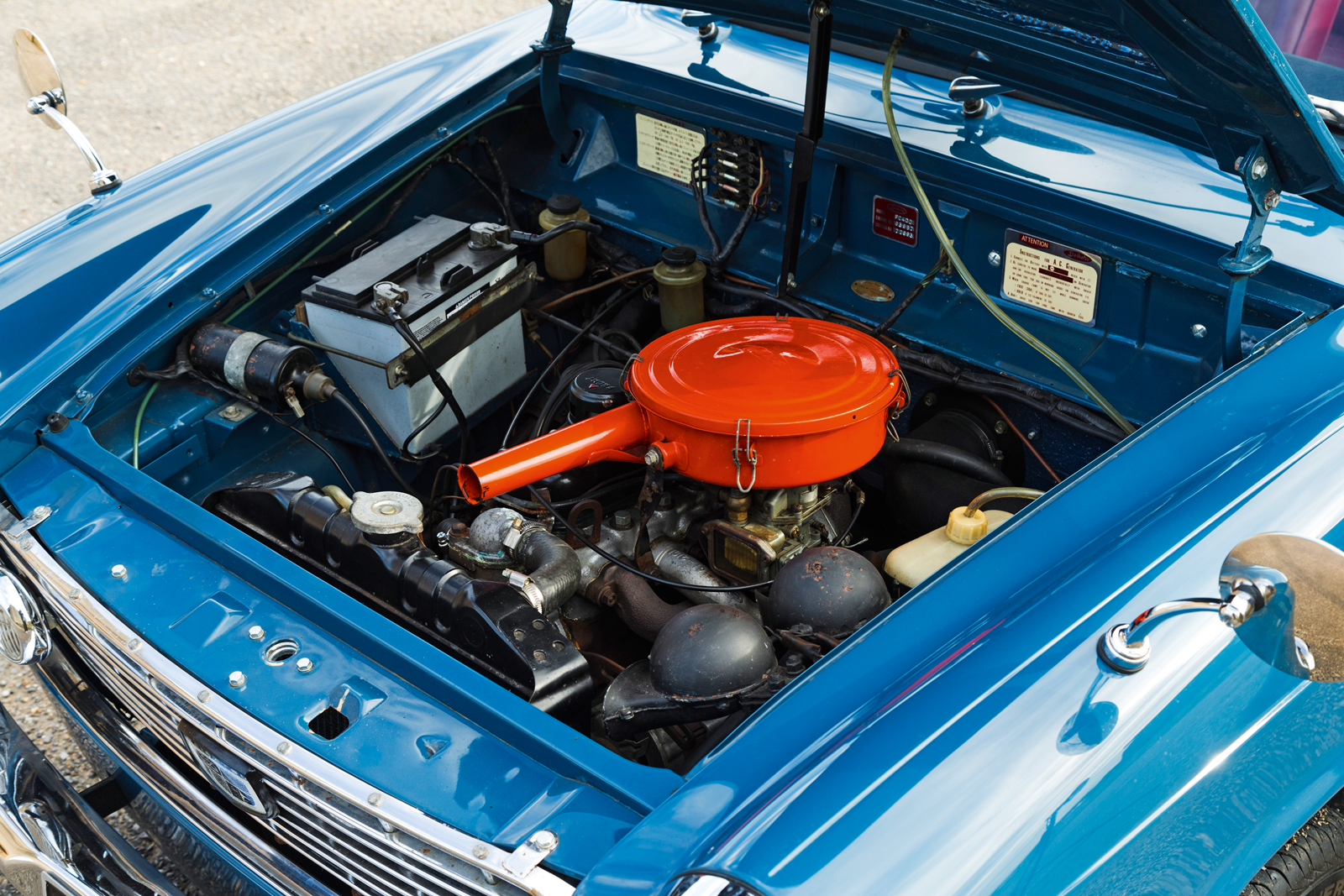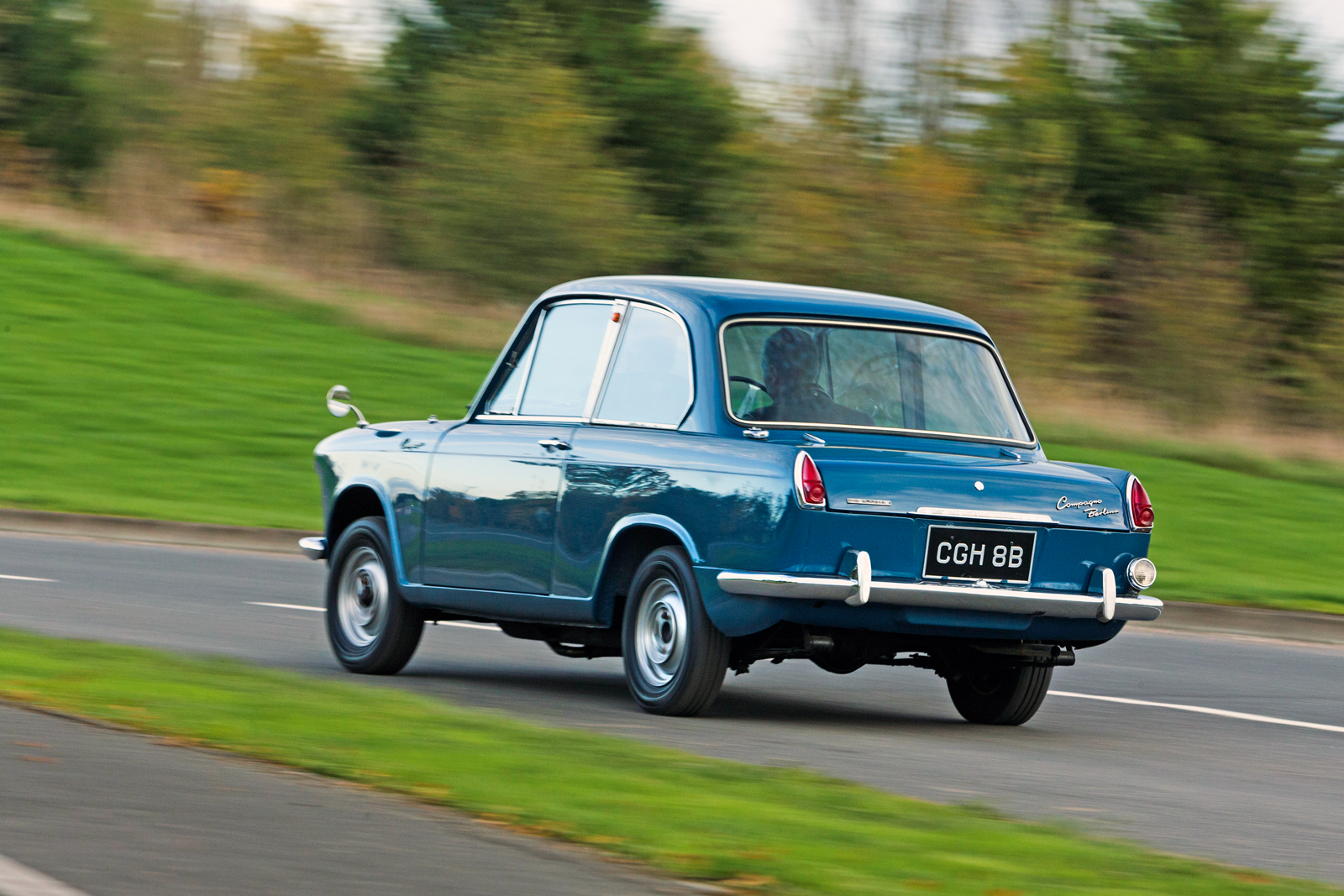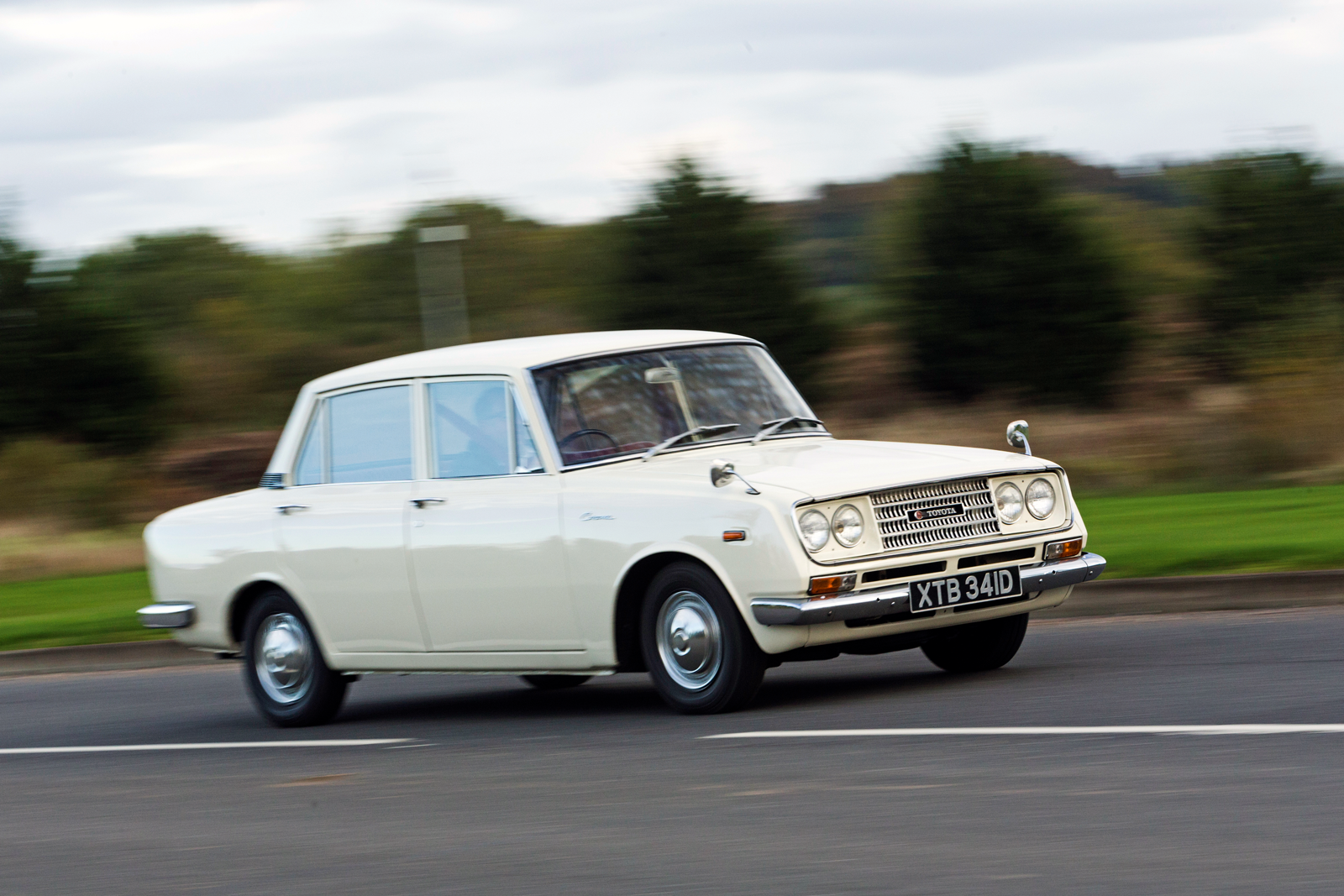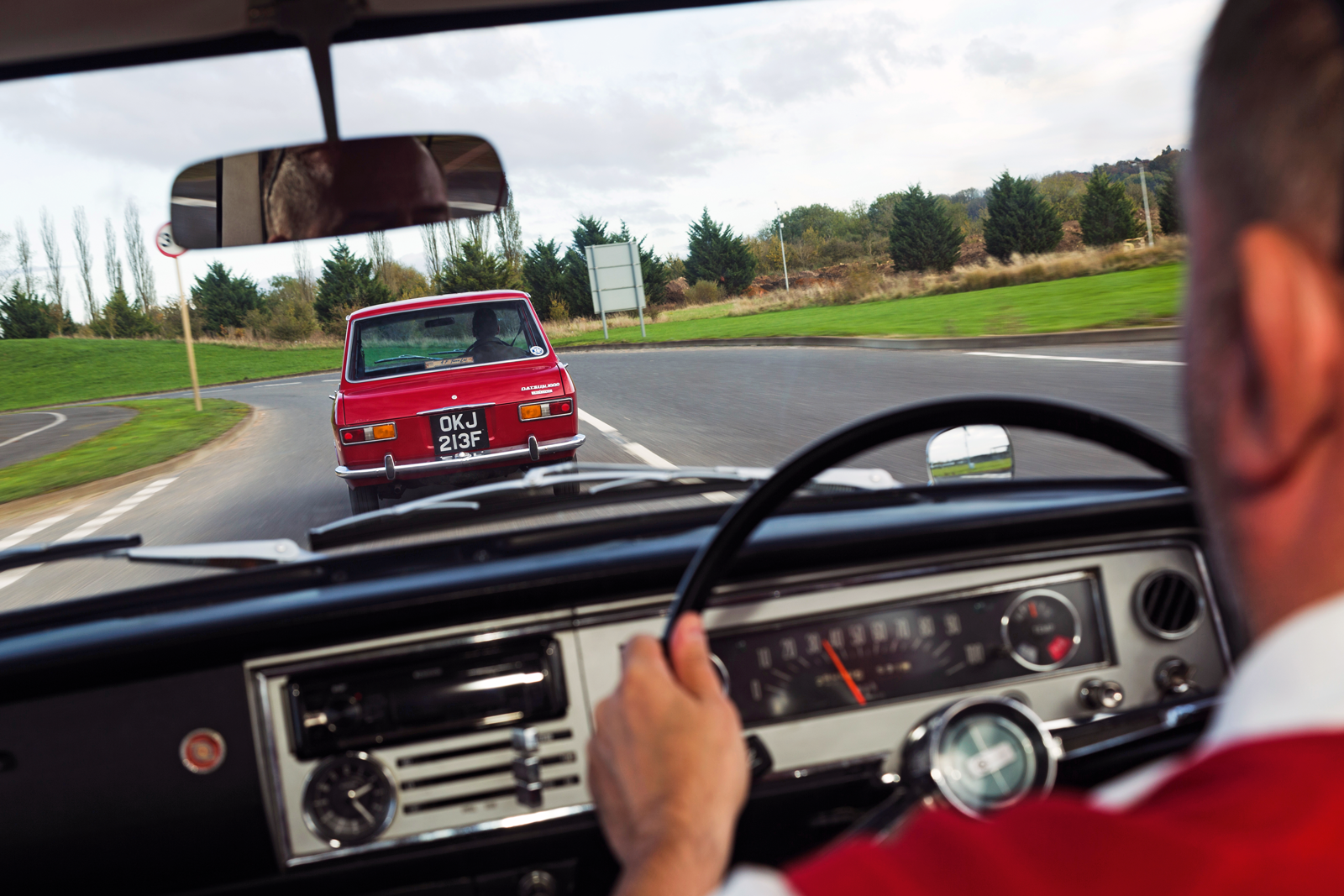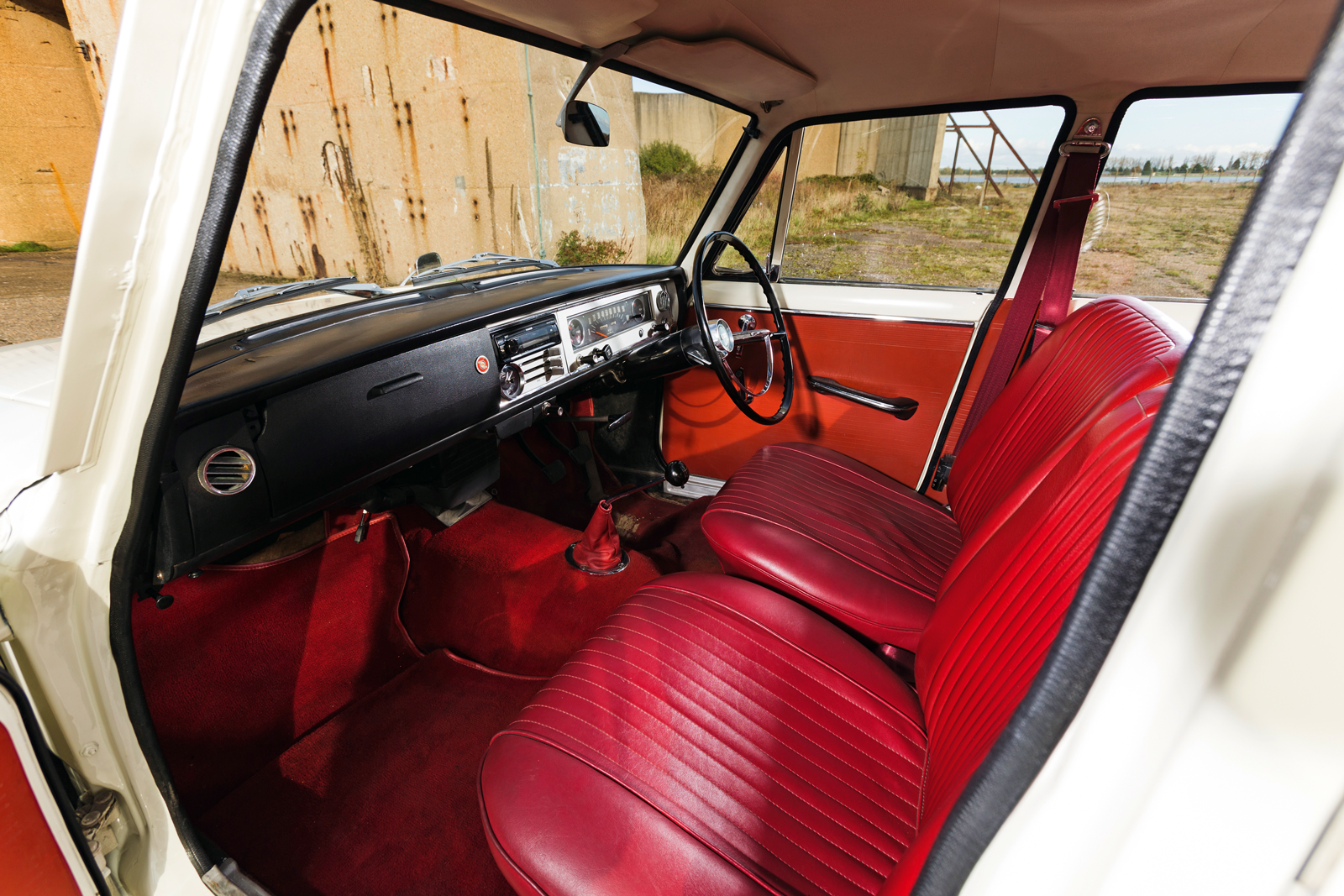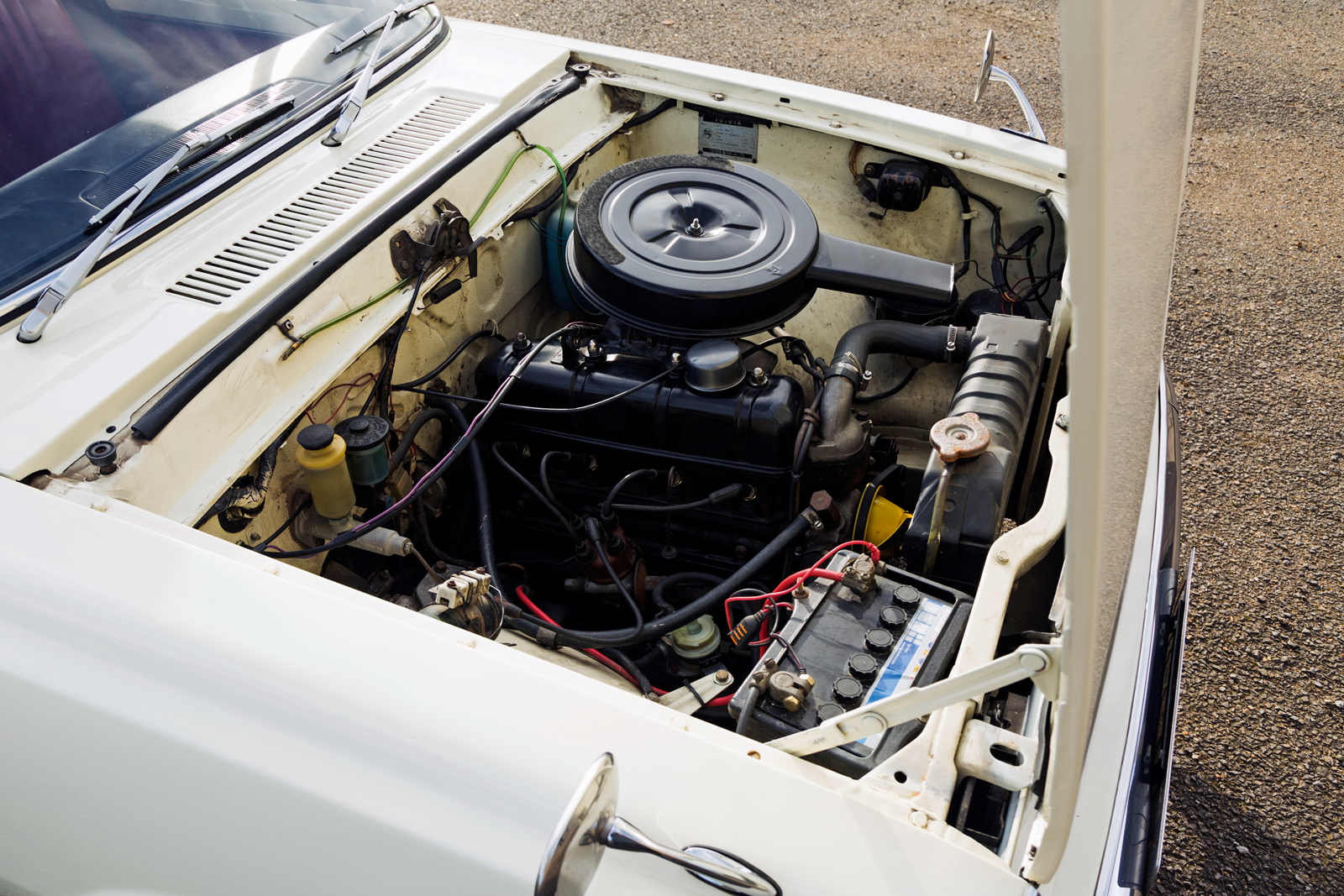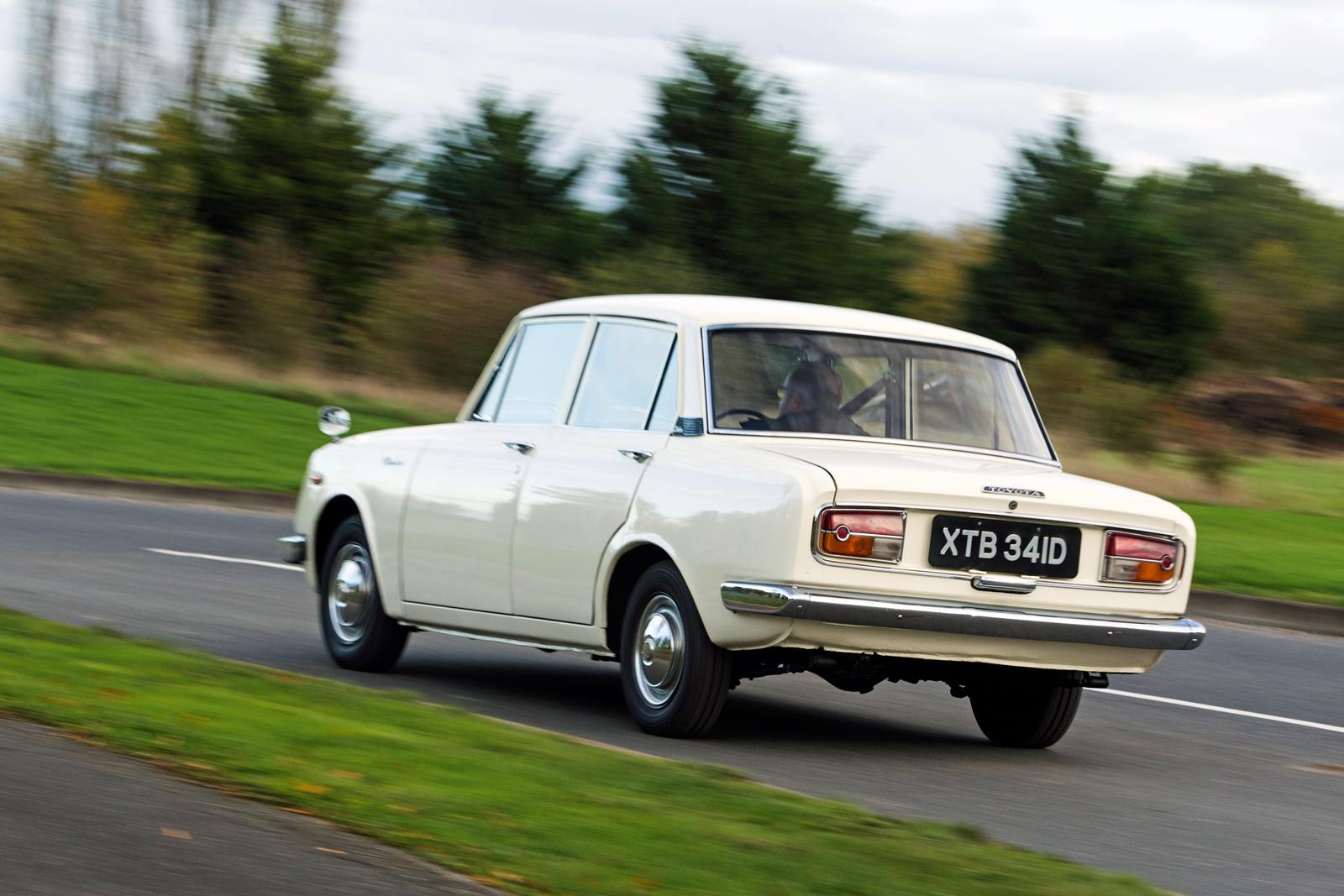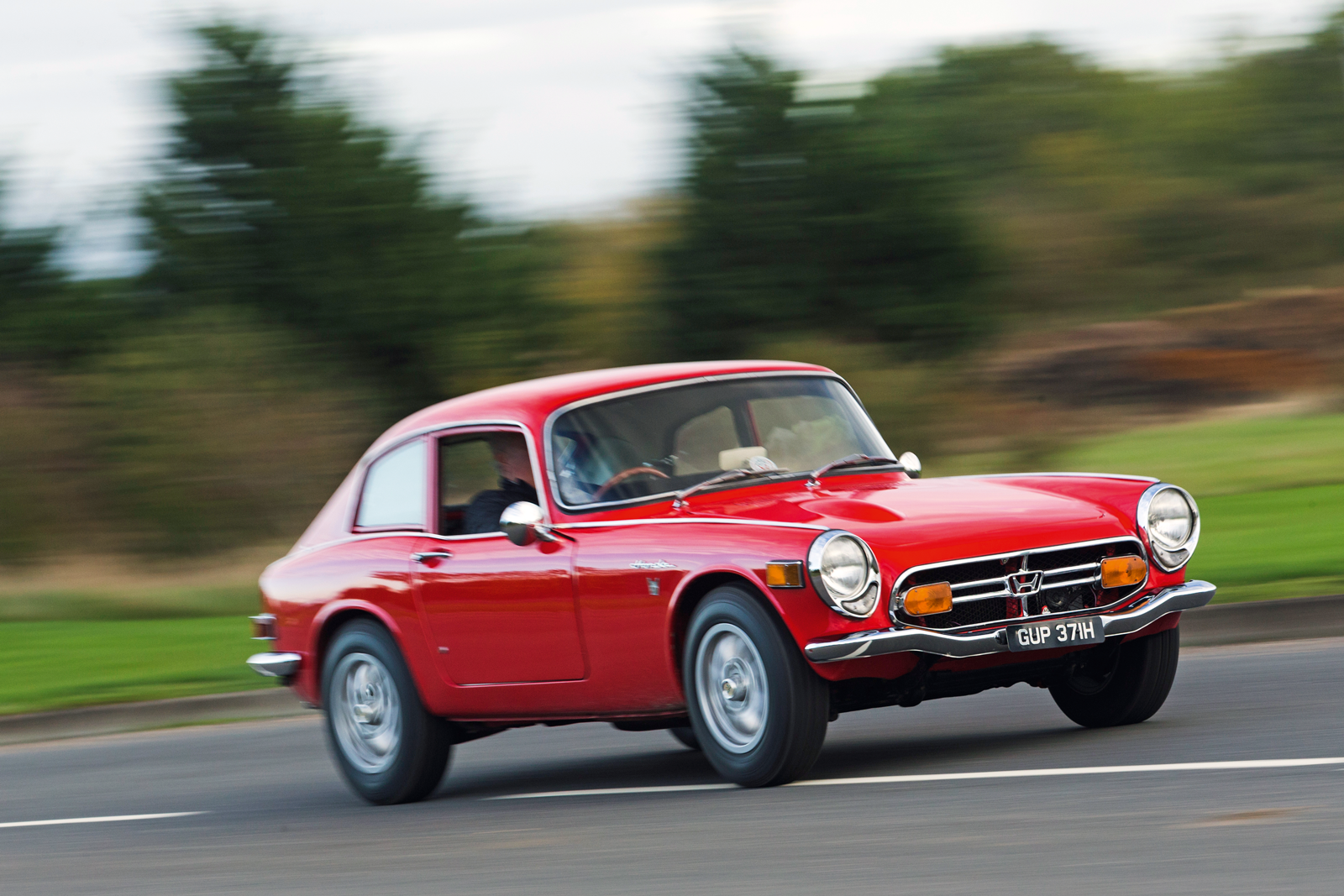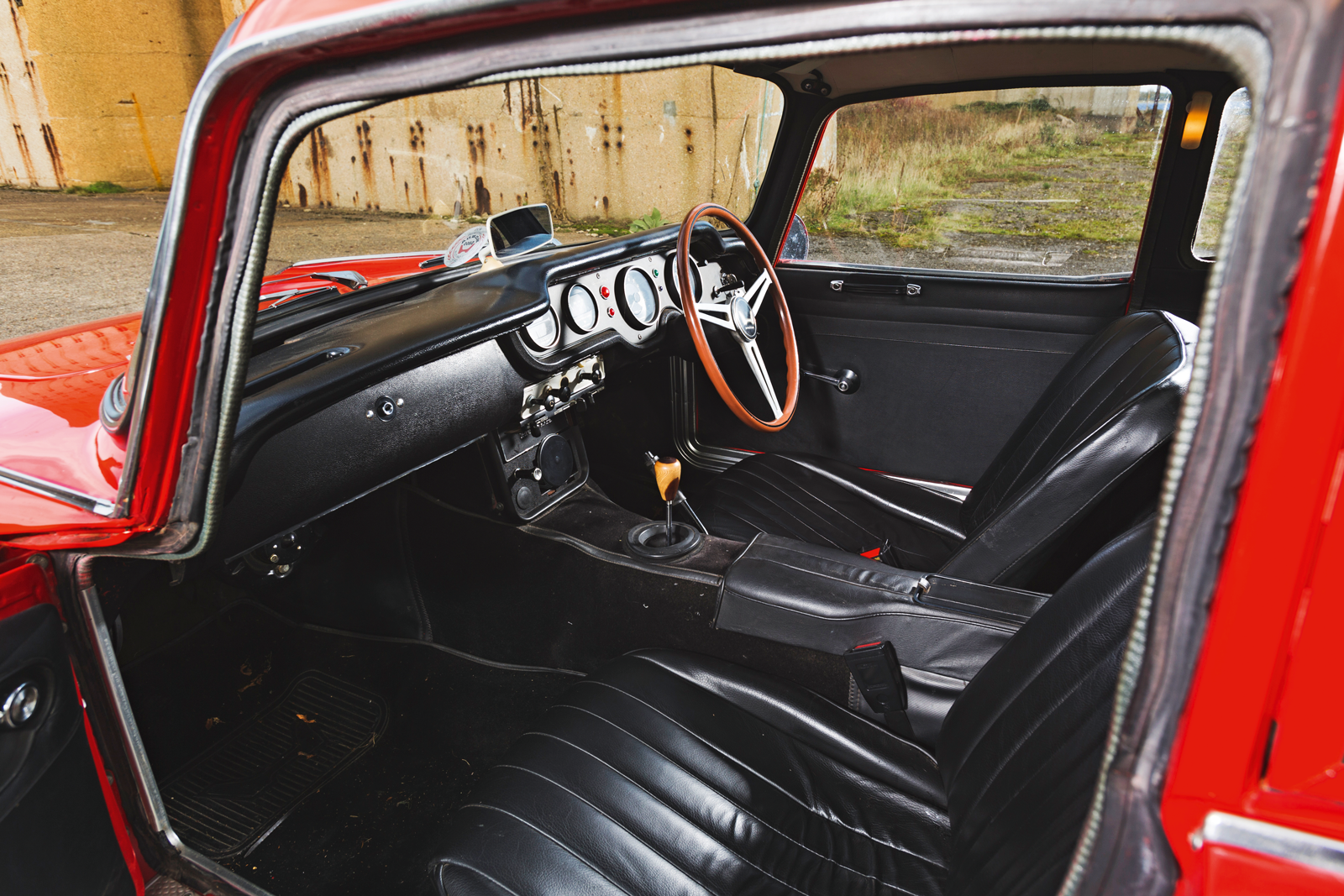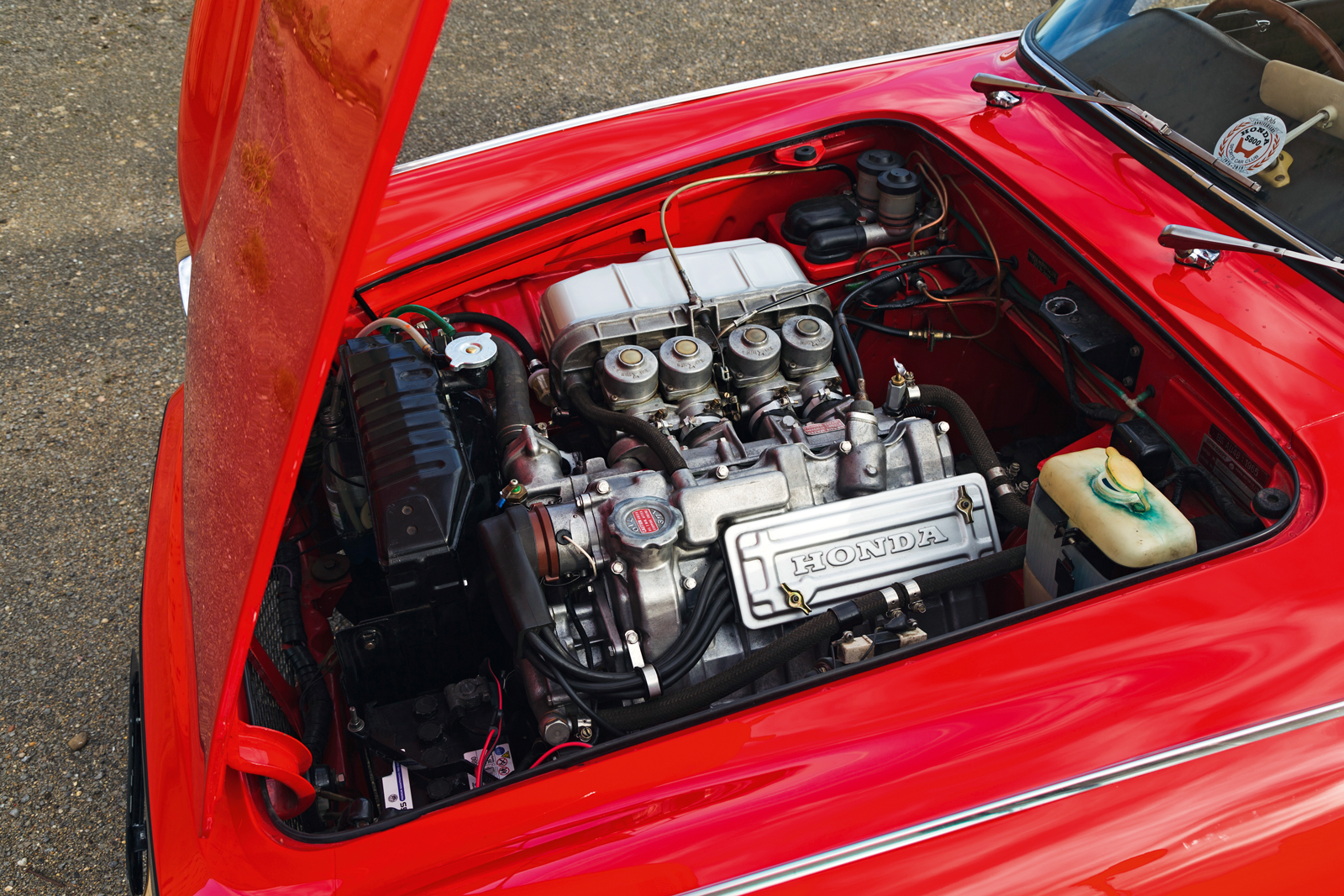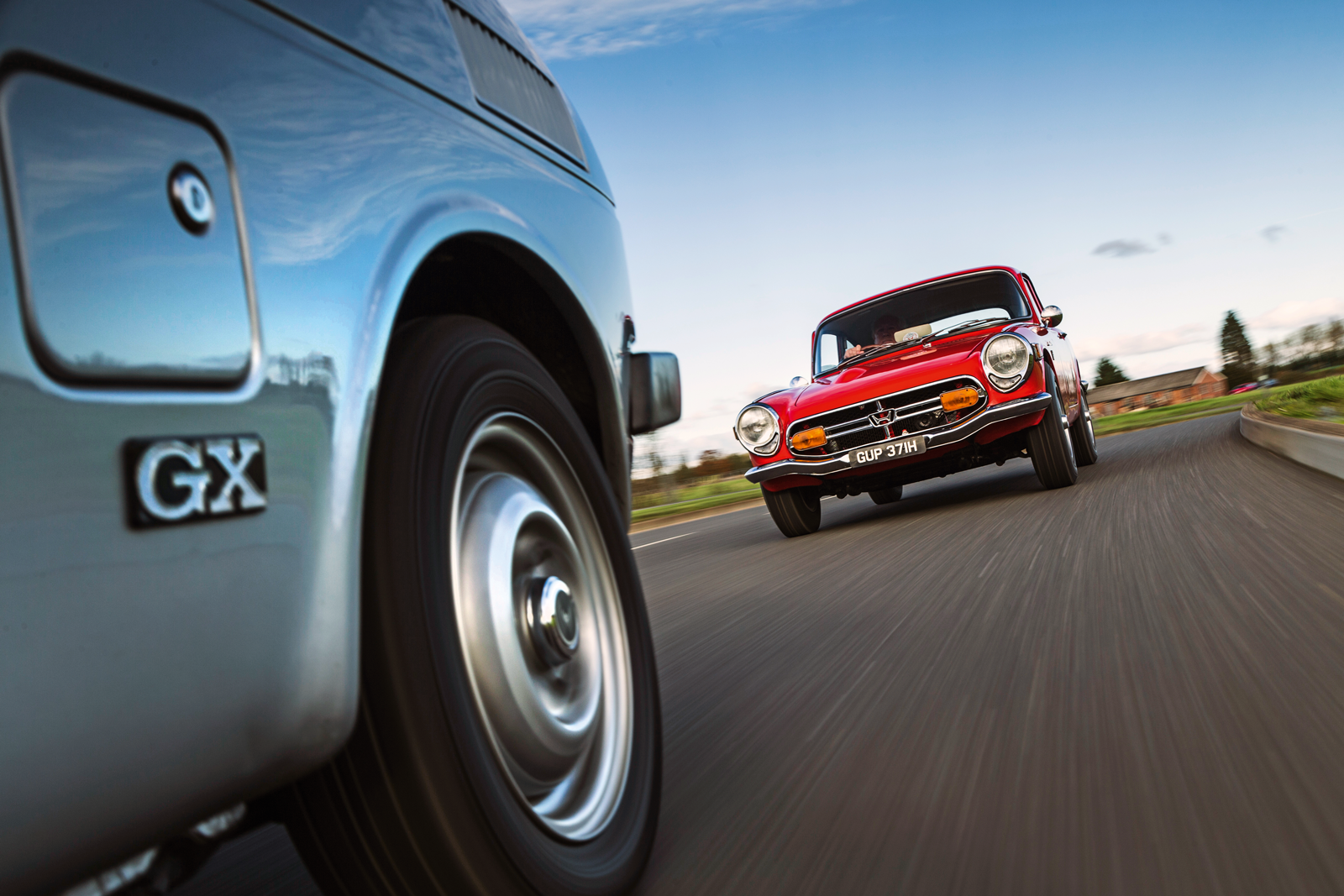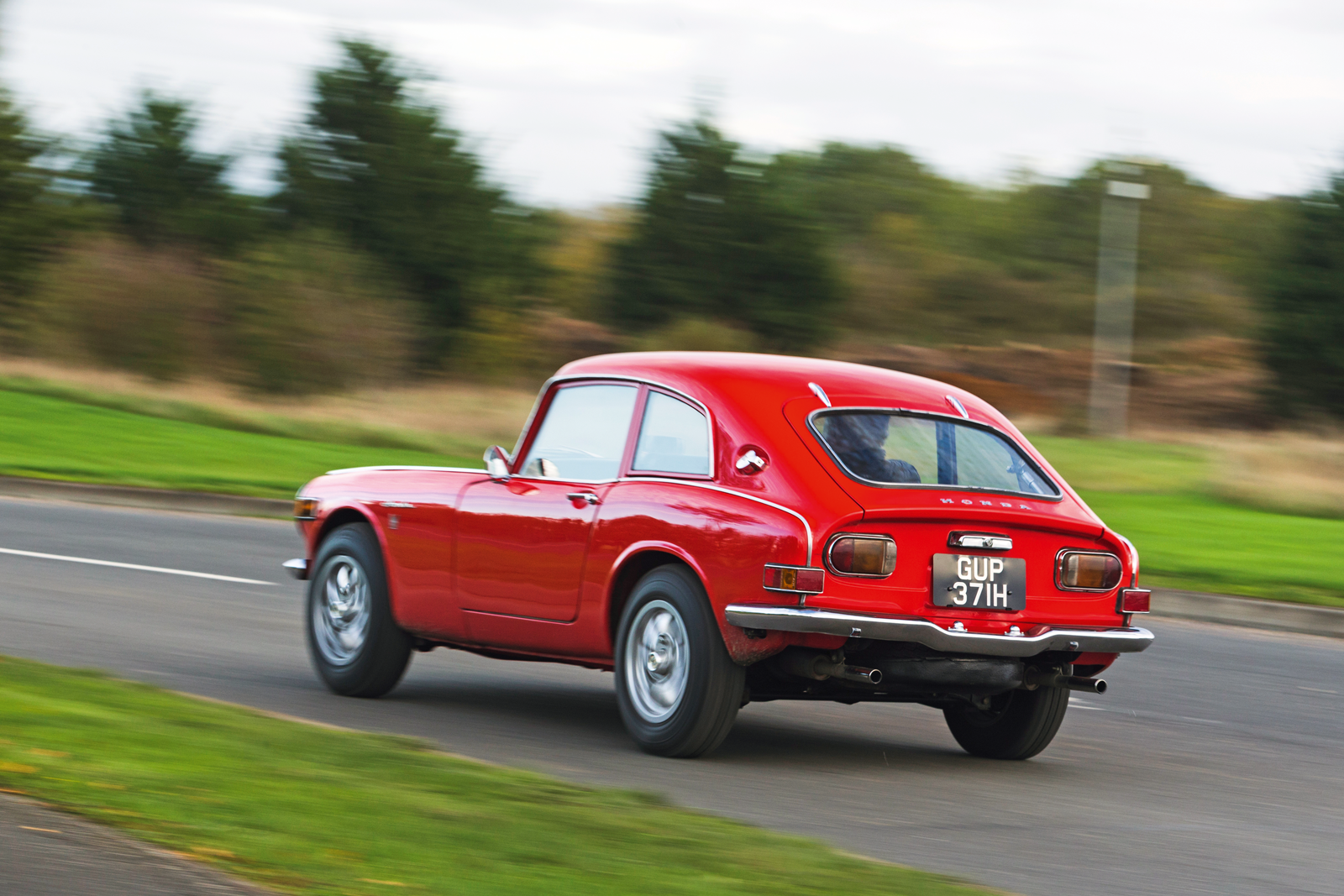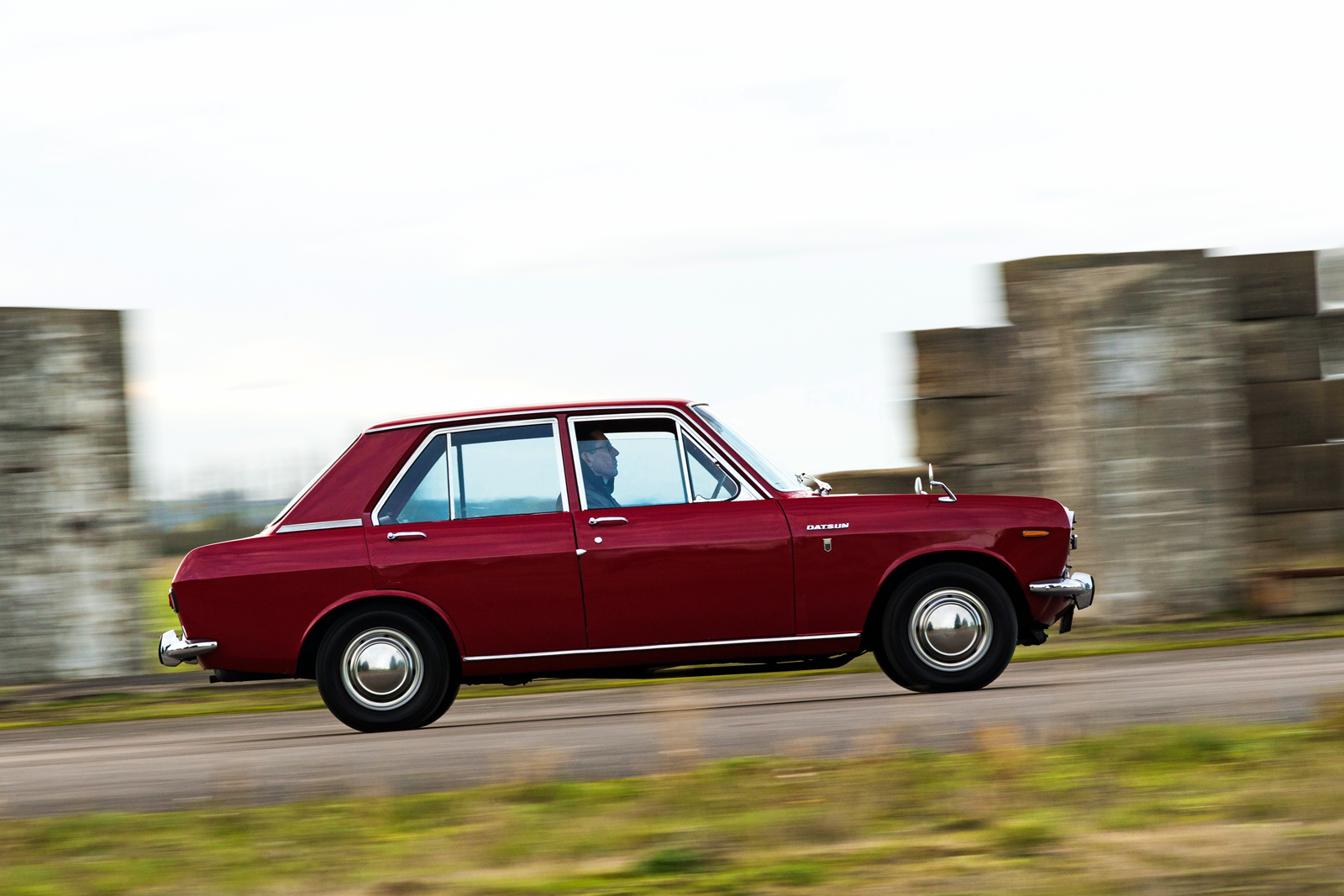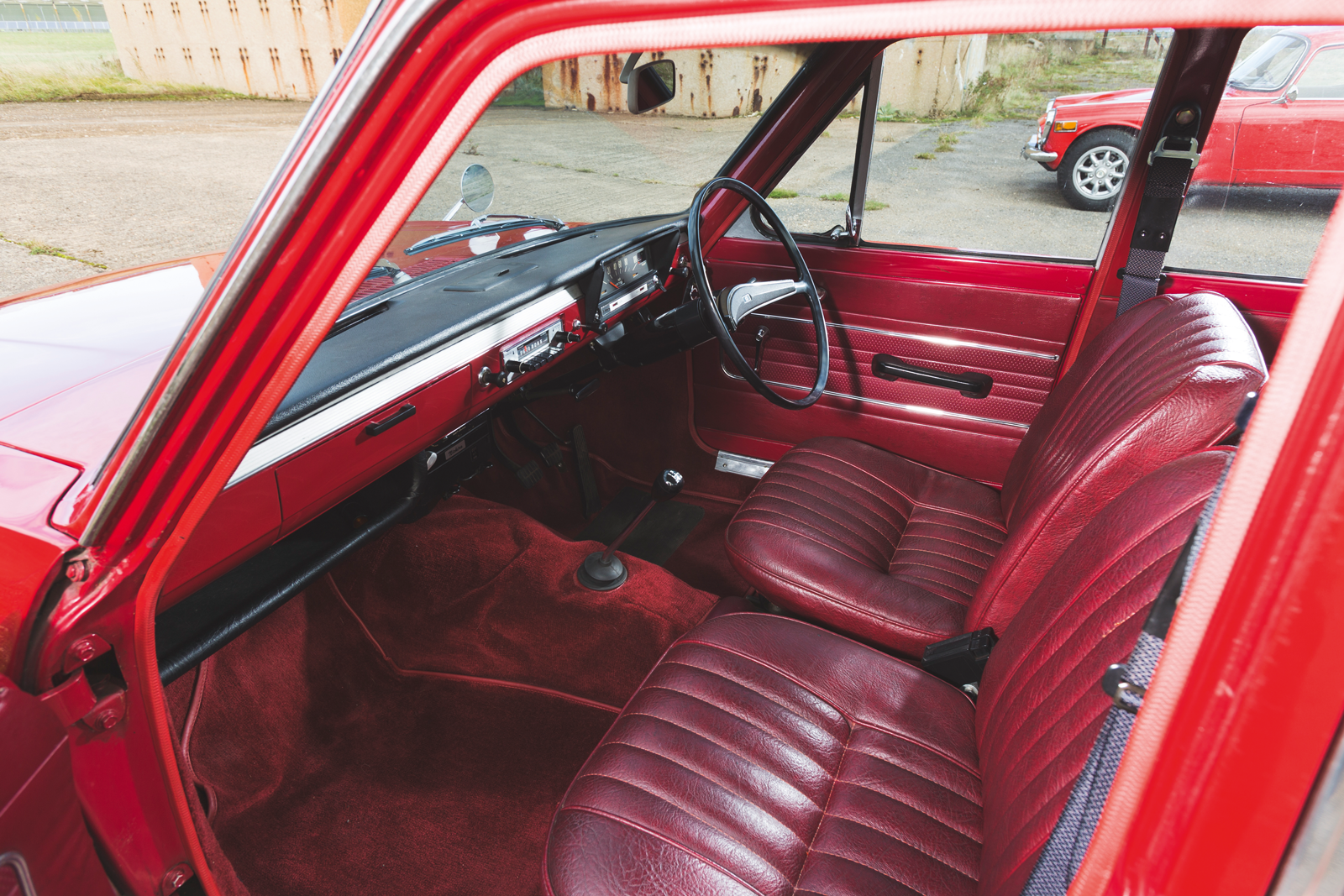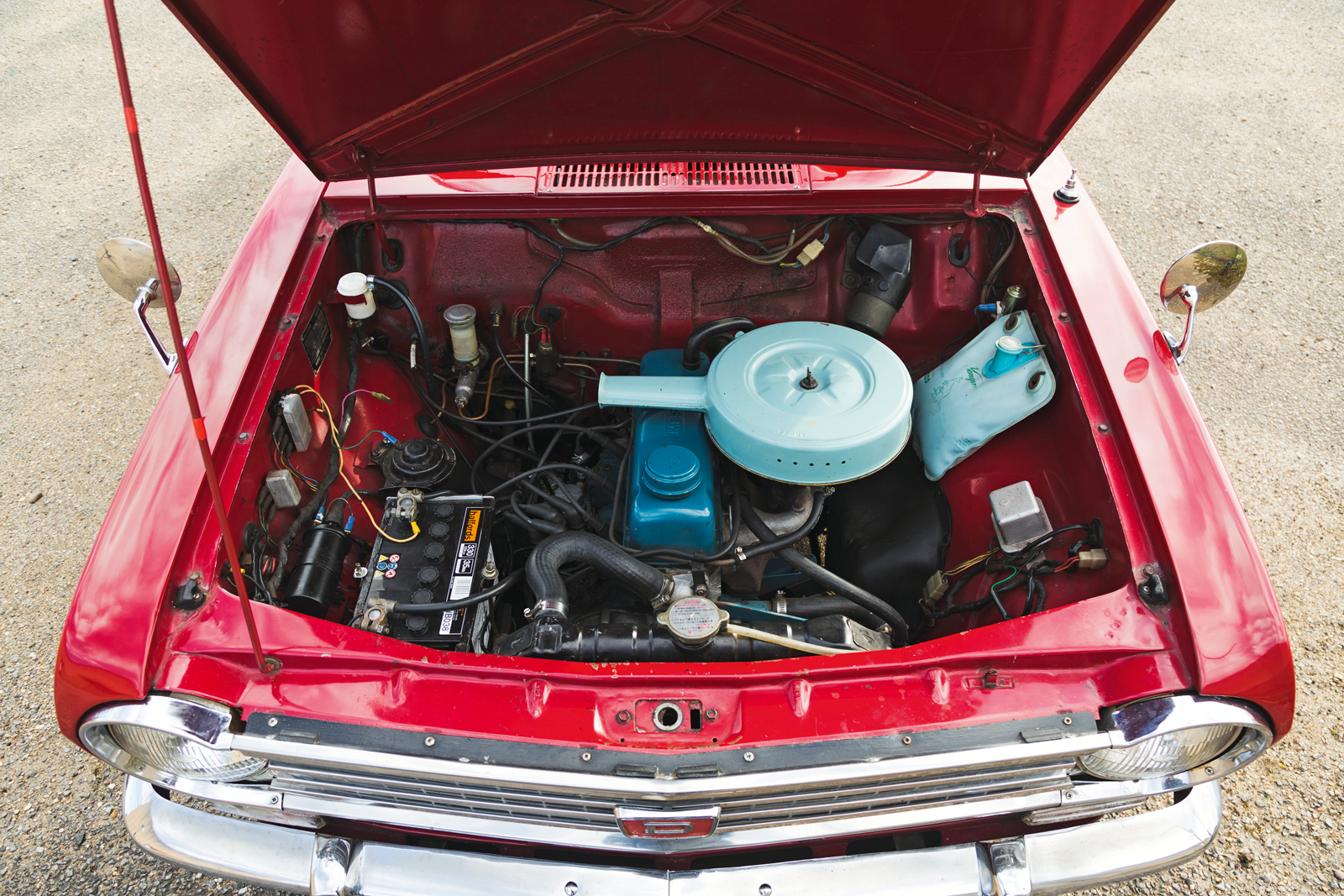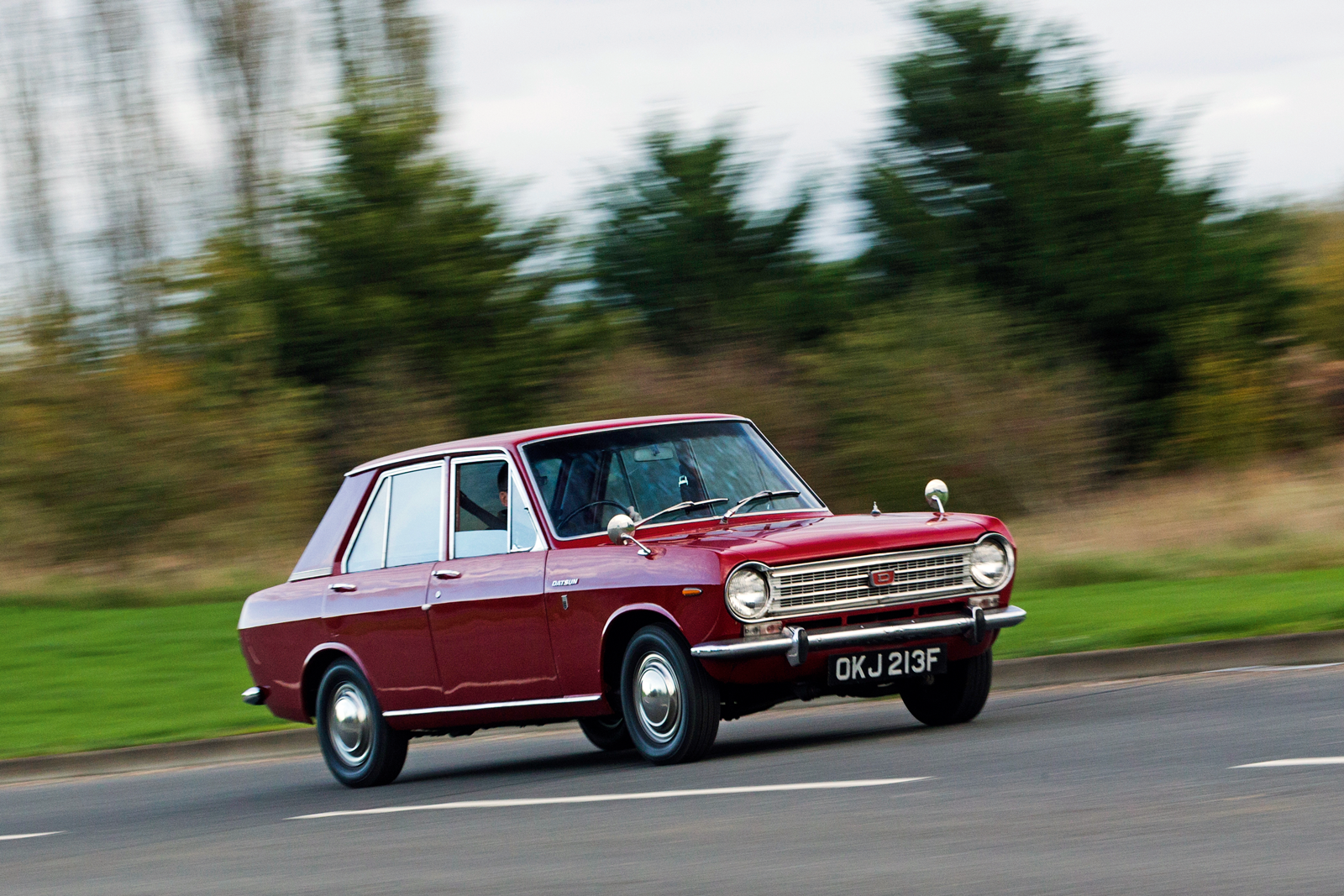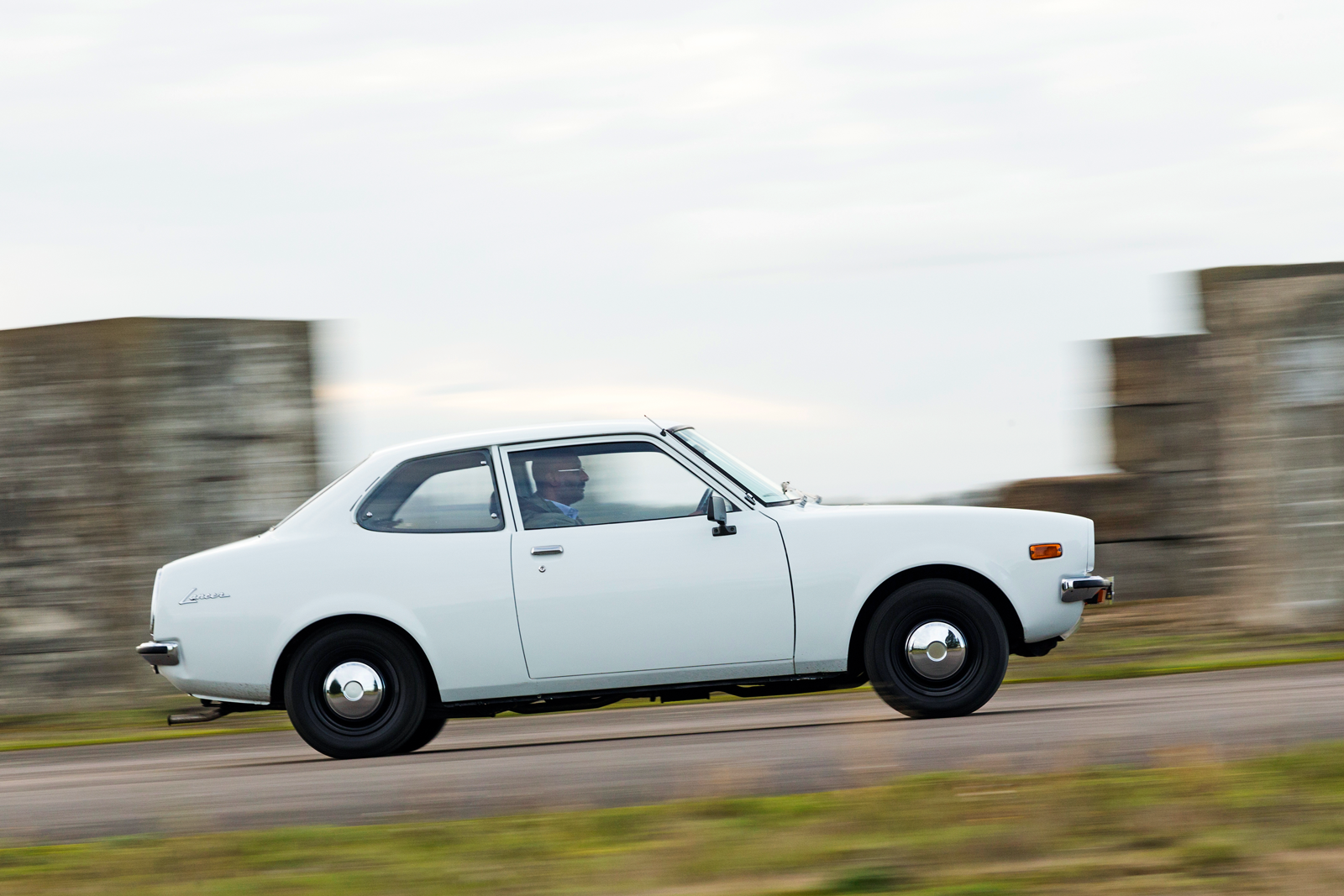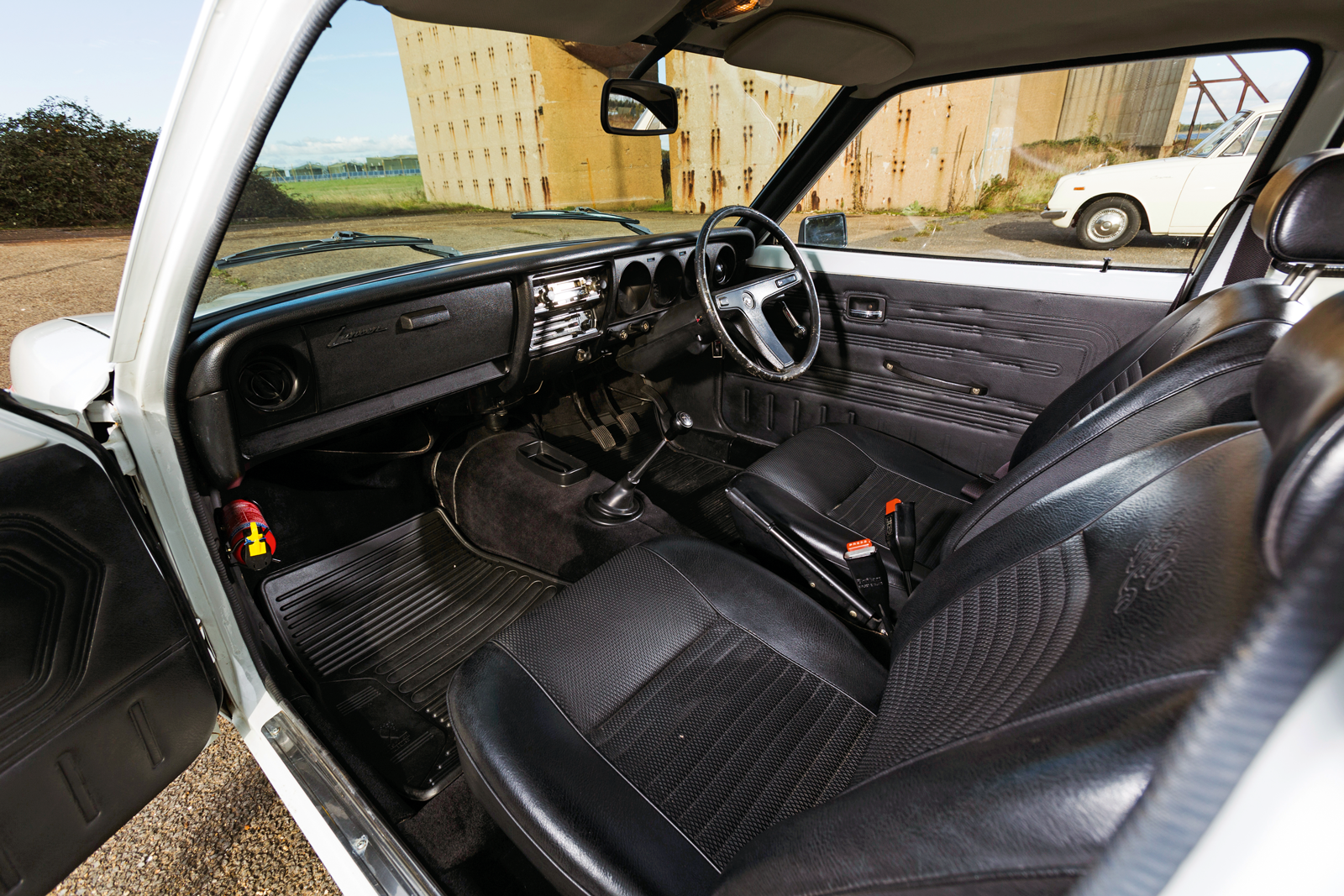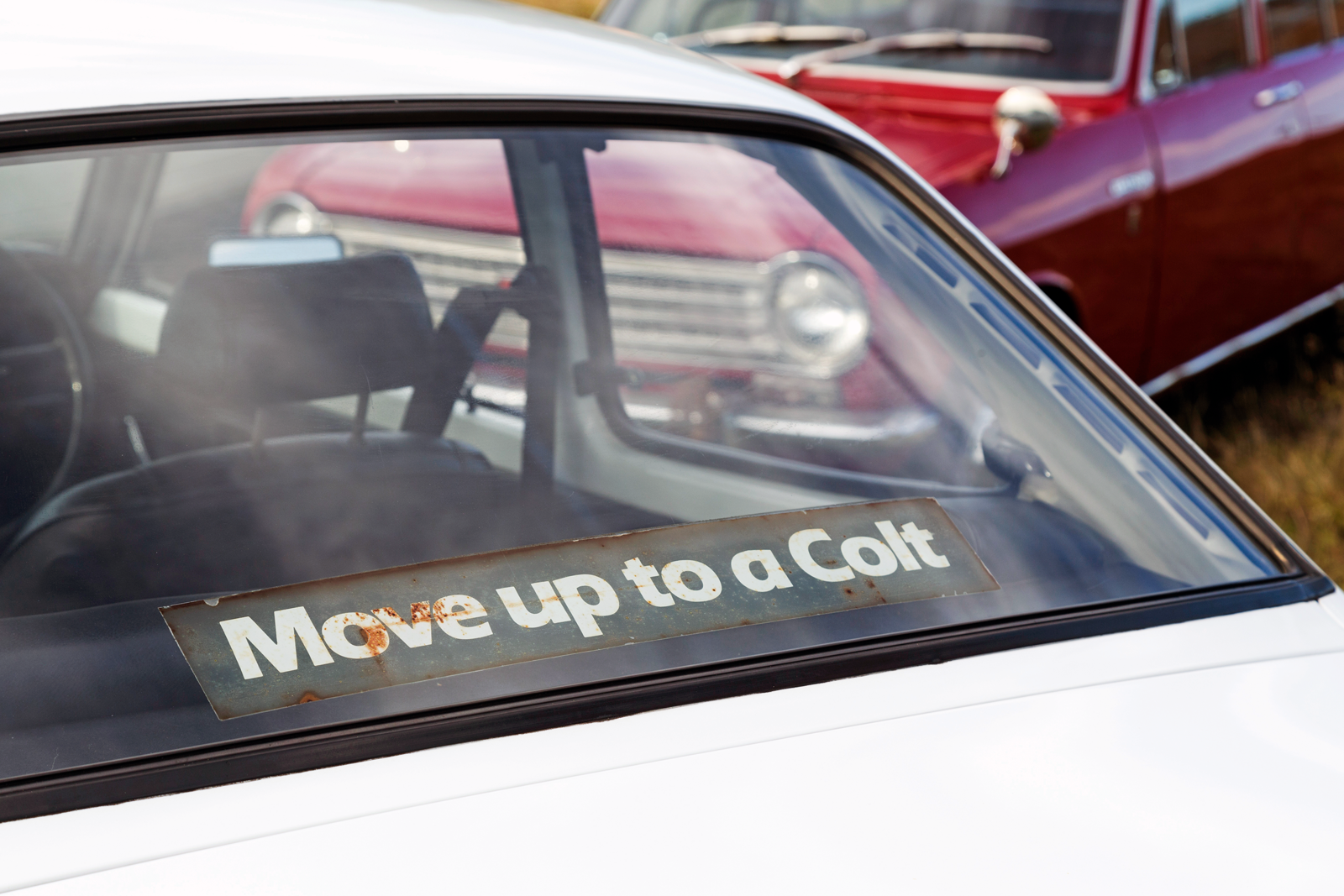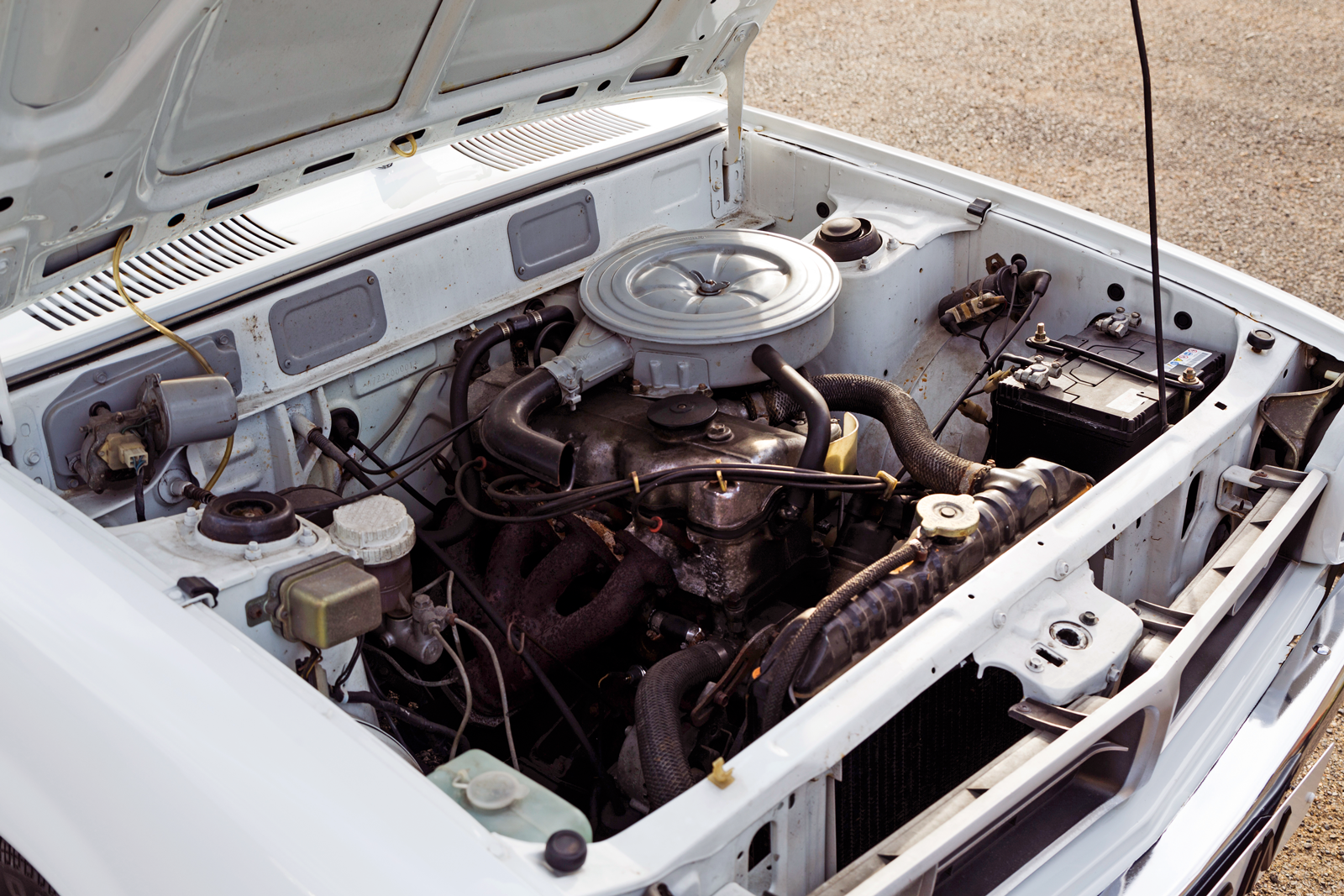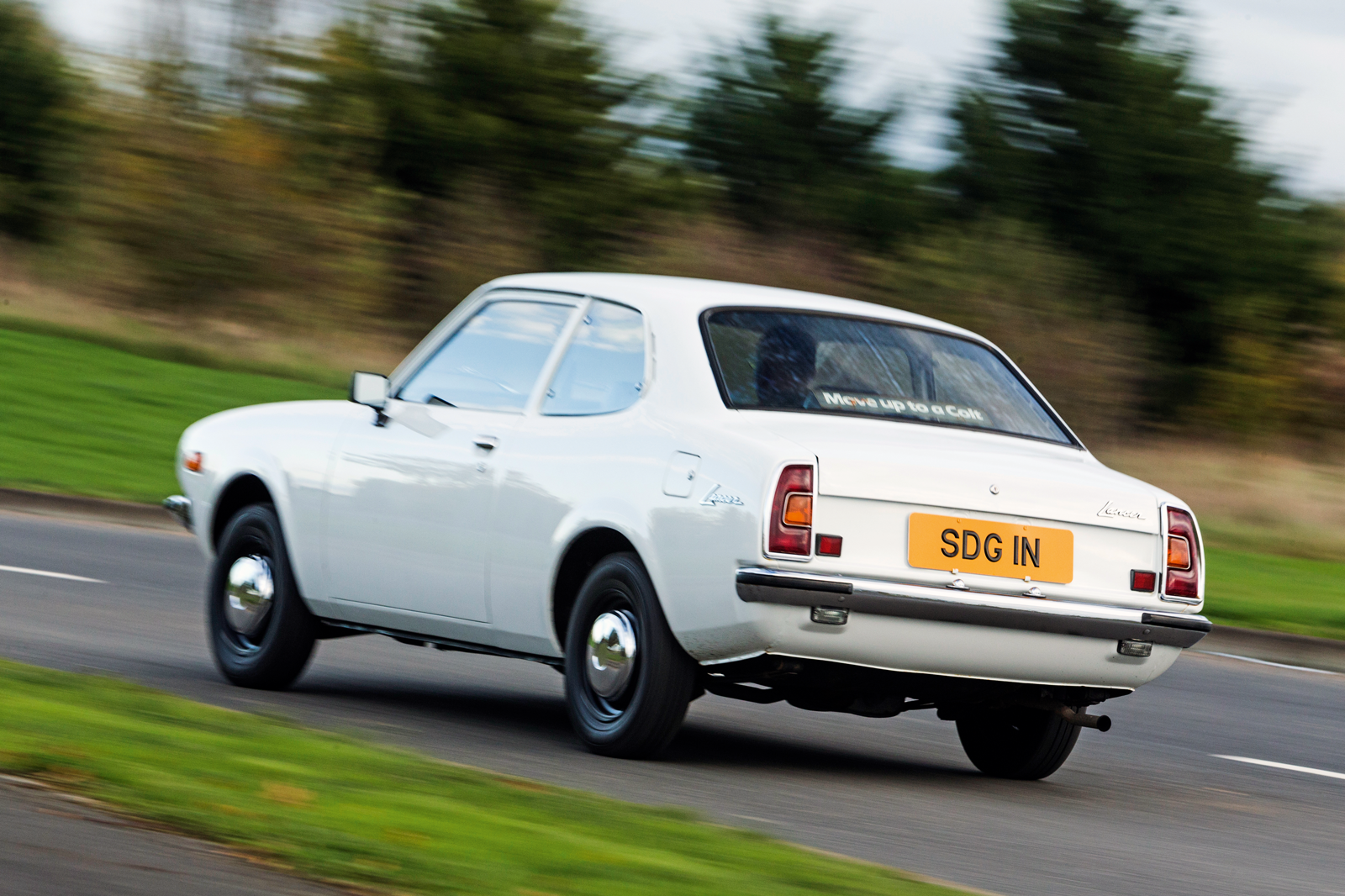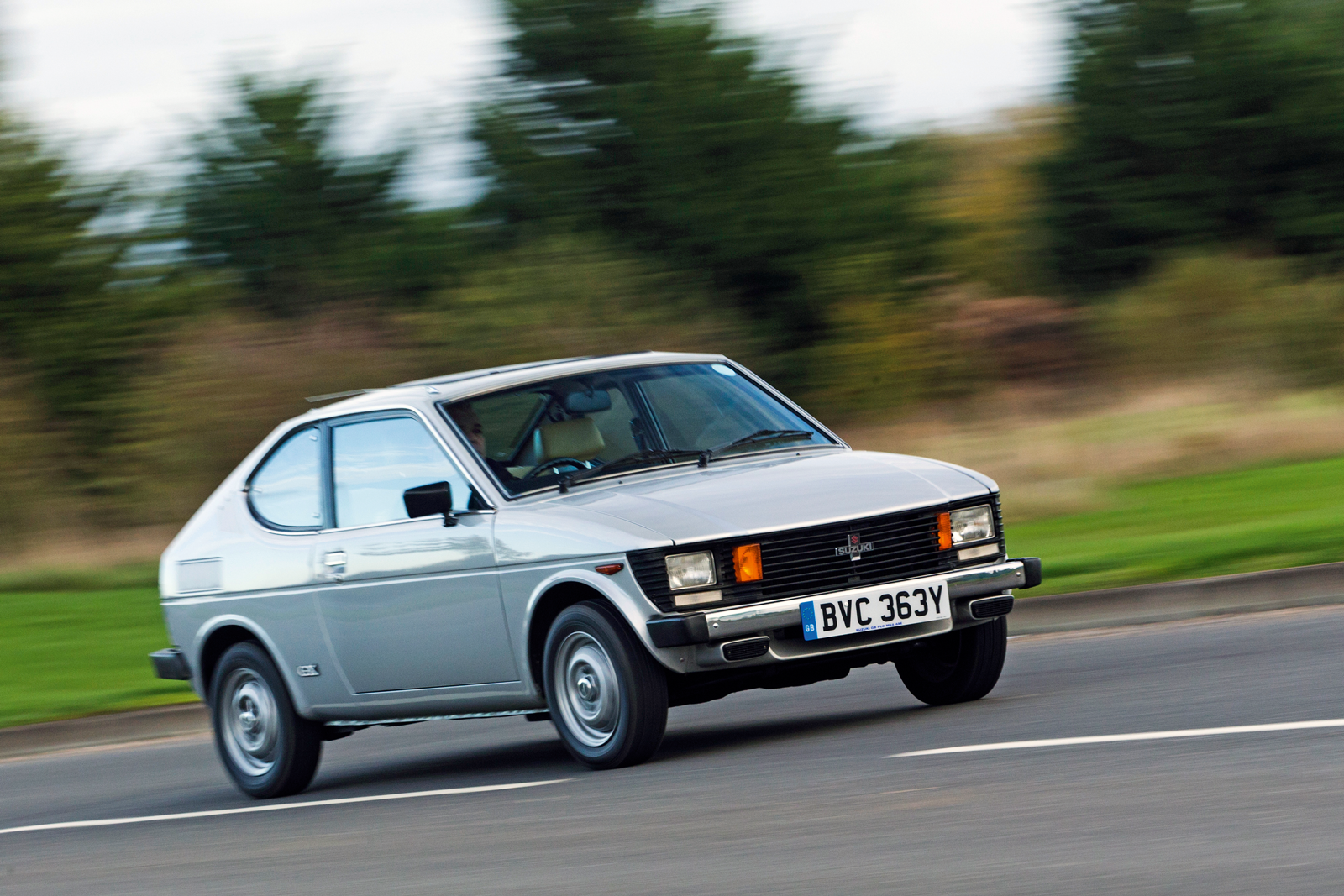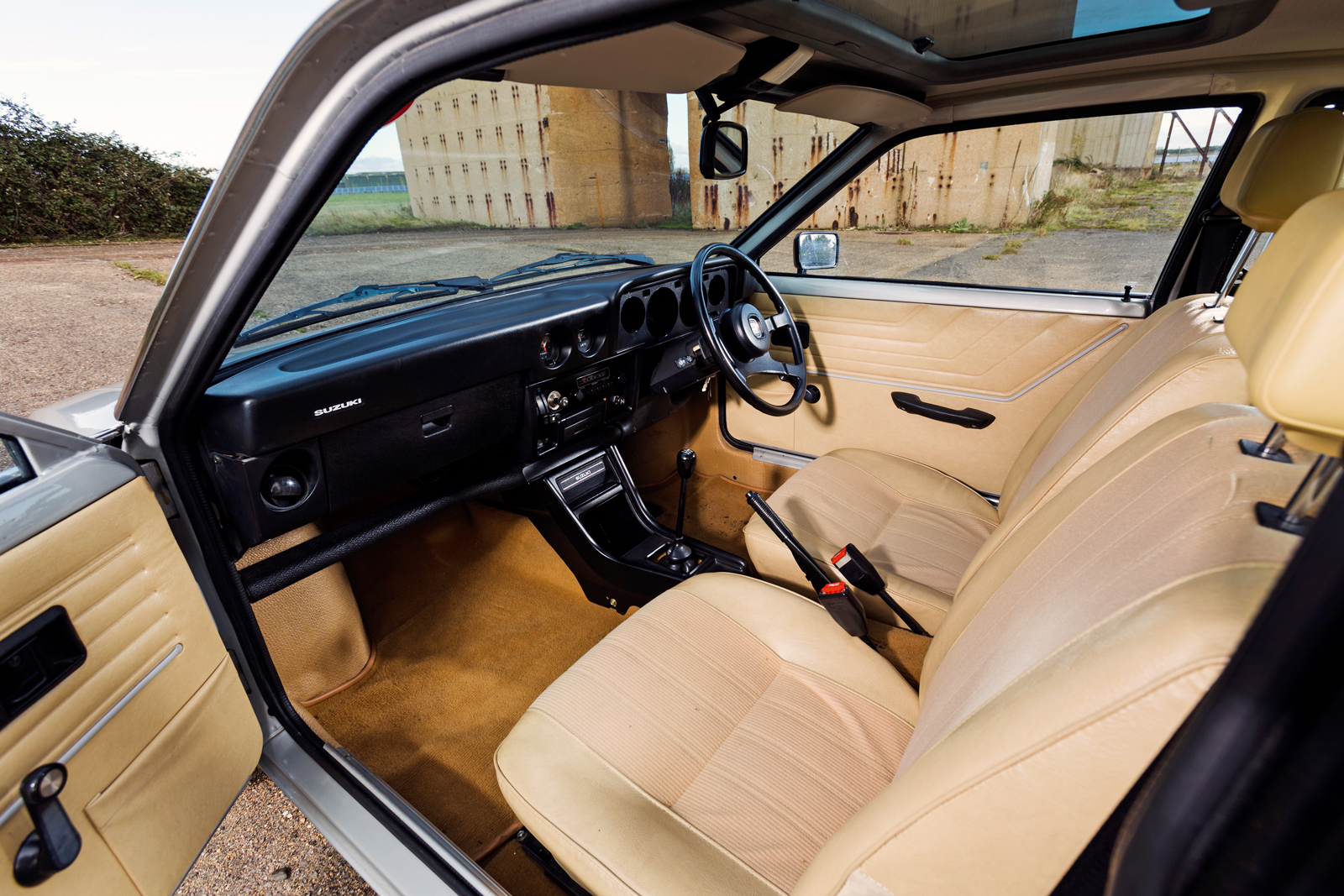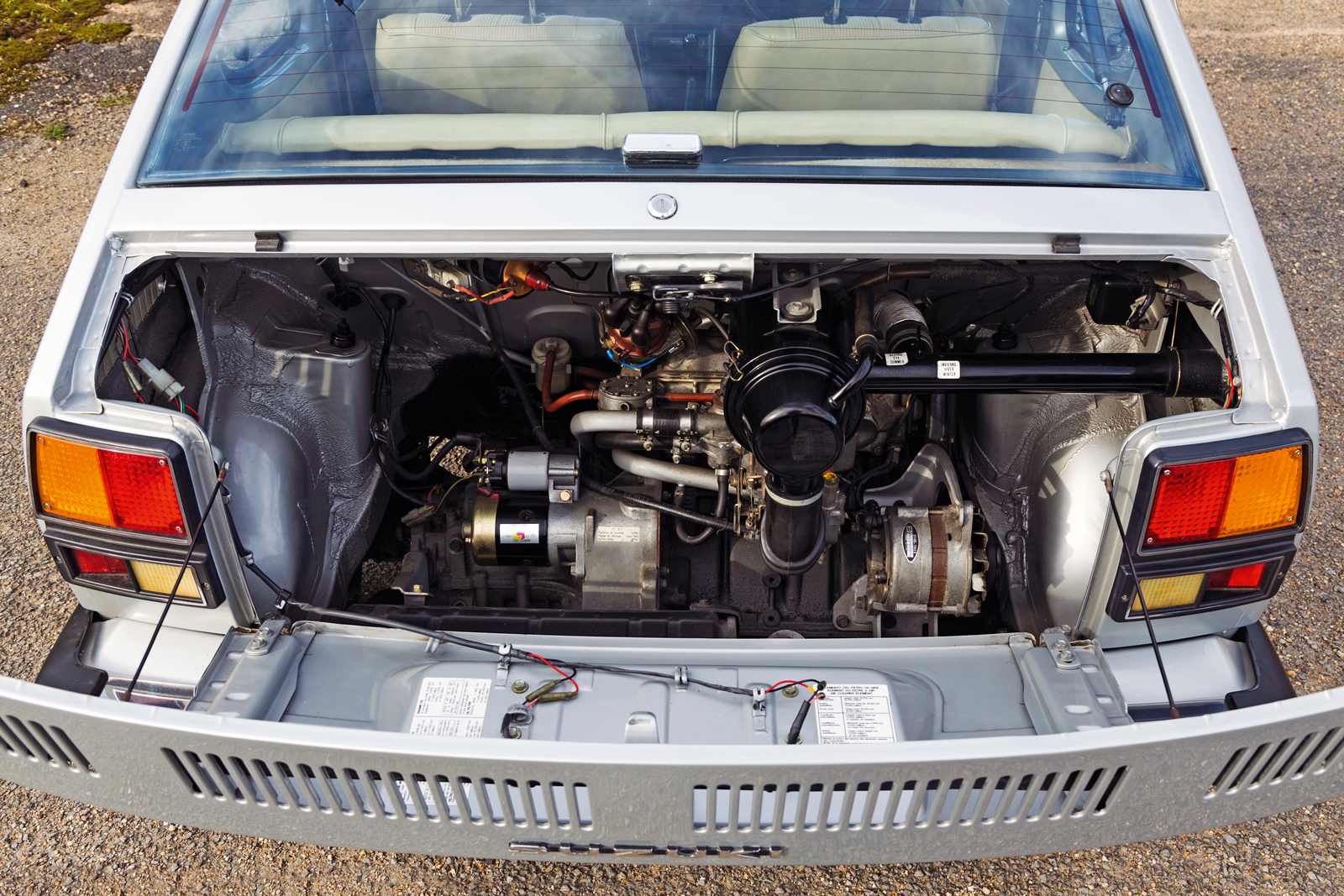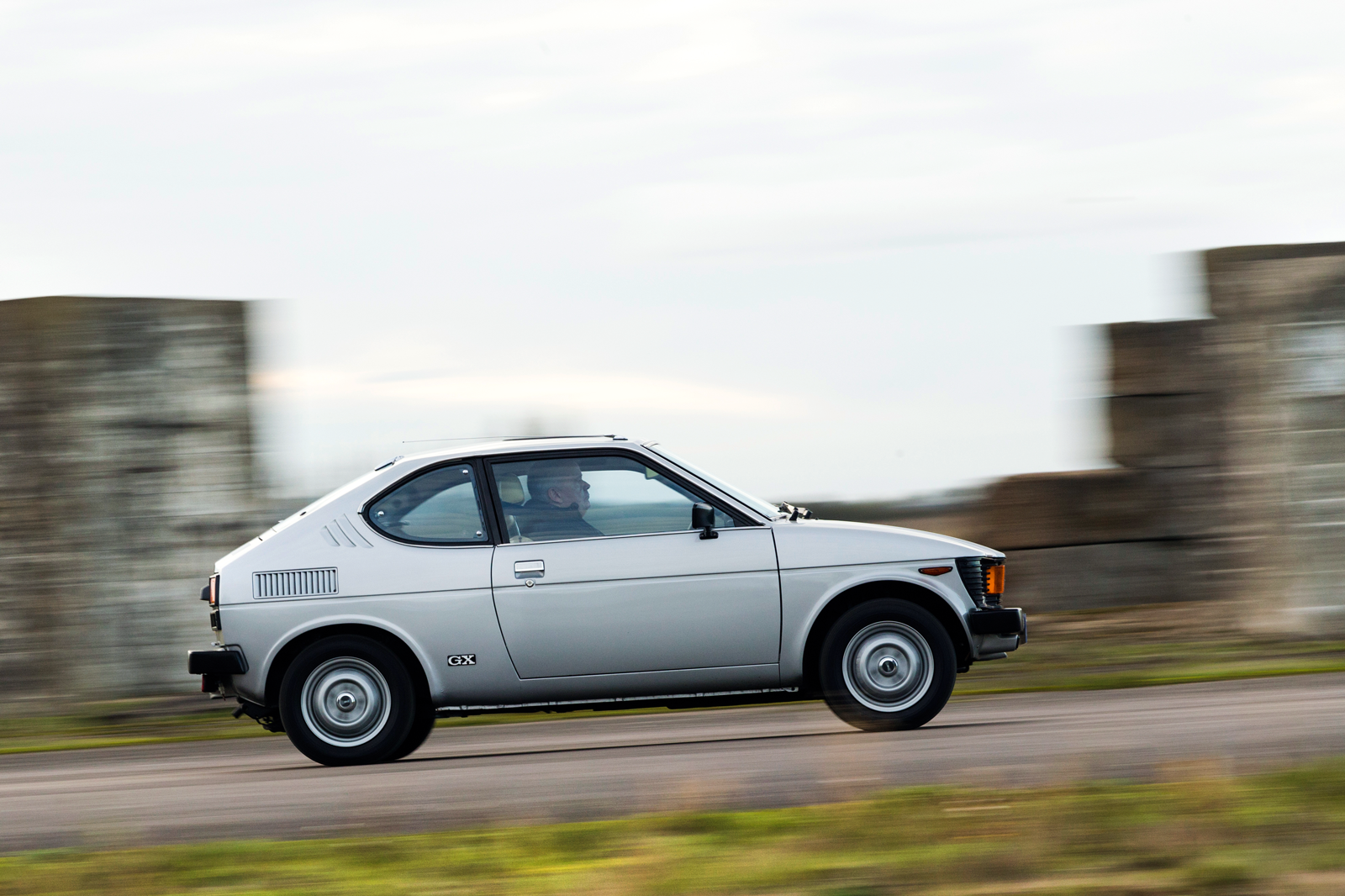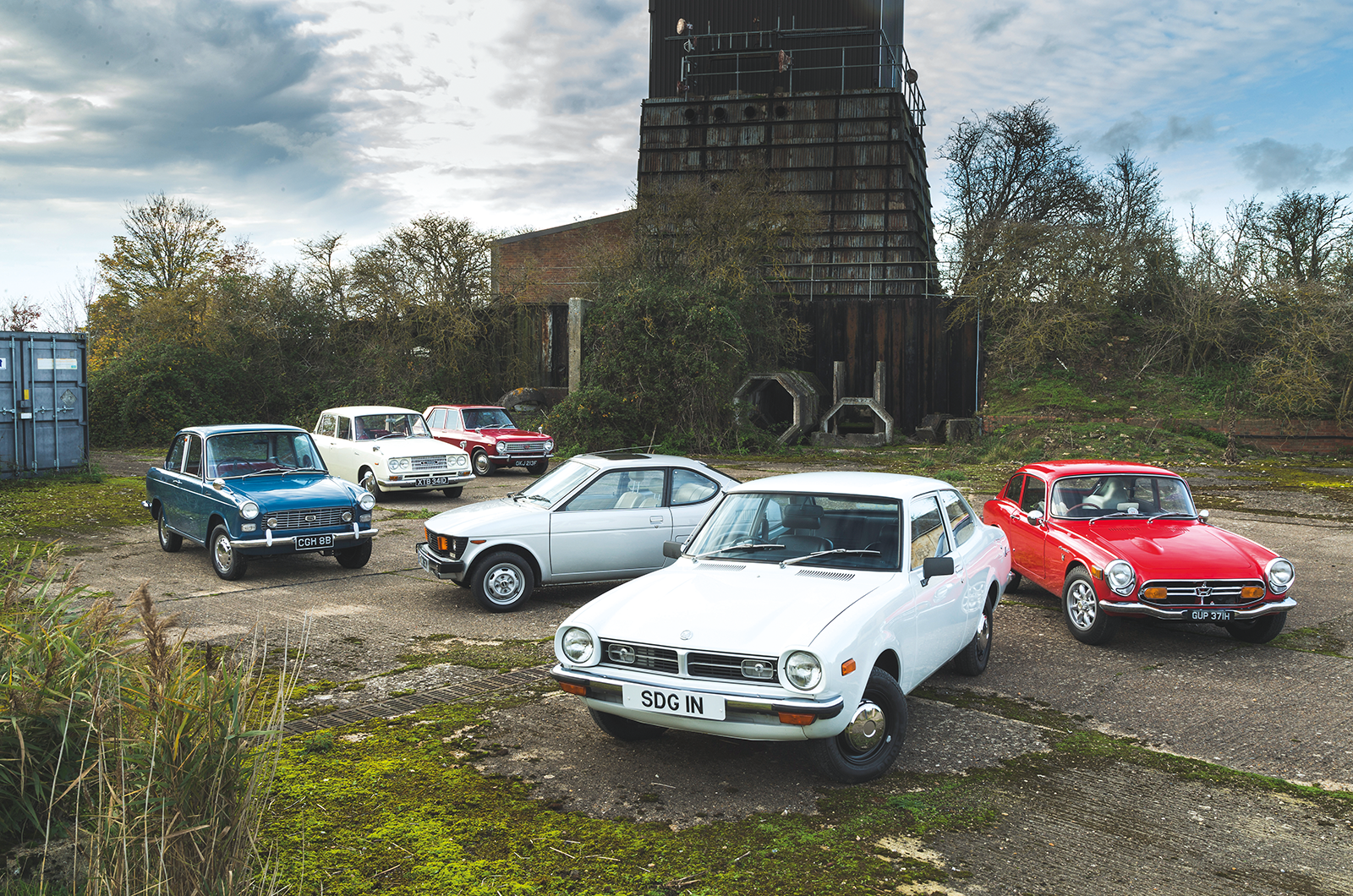In the metal, the Datsun is a vehicle of remarkable charm. As with the Compagno, the Sunny almost revelled in its conventional engineering but, unlike the Daihatsu, it benefited from a cohesive marketing strategy.
British sales of ‘the £770 car that costs no more’ were around 900, but they provided a foundation for Datsun in this country.
Just three years after the B110-series 1200 superseded the B10, the marque was second only to Renault as a UK importer.
The Colt Lancer was available as a two- or four-door saloon, along with coupé and practical estate variants
Late to the party, Mitsubishi’s original press model dates from 1974.
The 1100F evaluated in the 1960s was only testing the water, but the A70-series Lancer was marketed under the Colt Car Company banner as ‘A Tough New Breed of Car’.
It first appeared in early 1973, and considerable publicity was derived from the Lancer of Joginder Singh and David Doig winning the Safari Rally in 1974 and ’76.
As for the humbler entry-level version, with its 1.2-litre overhead-valve engine, it impressed no less a writer than Car’s George Bishop.
Clockwise from top: the Lancer’s unremittingly black cabin screams 1970s Japanese classic, but it is well equipped; the willing 1.2-litre engine; early Mitsubishis were marketed as Colts in the UK
He regarded the Lancer as demonstrating how: ‘The old way of doing things still works very well for the undemanding everyday driver.’
It was a formula that was guaranteed to appeal to a considerable sector of the motoring public, including those who had become jaded with the innovative (and spectacularly unreliable).
The A70 was replaced by the EX in 1979.
The Colt is quite cute, but lacks a little personality
“The Colt has a nicely weighted clutch, reassuringly effective brakes and tidy handling,” says Japanese car aficionado Darren Rungasamy, its pilot for the day.
“There is a remarkable amount to like about the Lancer.”
The coachwork conveys faint notes of Americana, especially around the C-pillars, and the brochure promised: ‘Rugged durability and road-taming performance.’
Most buyers would have been more impressed by the sweet gearchange and the array of fittings that included tilt-adjustable steering. Plus the fact that it would cut a mild dash in the Fine Fare car park.
UK Whizzkids came in a limited colour palette with square (rather than round) headlights, shared with the De Lorean
But for sheer cuteness, the Colt can’t hold a candle to the youngest member of our group.
The tiny Suzuki SC100’s dimensions make the Datsun 1000 look Granada-sized – it seems to hover around your ankles.
As its 970cc ‘four’ reverberates across the Buckinghamshire countryside, its surprising turn of speed causes many a startled glance from Mondeo owners, the engine note drawing to mind the frenetic whirr of an out-of-control spin dryer.
Suzuki launched the Giugiaro-styled Fronte Coupé in late 1971, and the Cervo of 1977 continued with the same formula on a slightly larger scale.
British sales commenced in 1979, badged SC100, where the Suzuki was offered only in top-of-the-range GX guise – and marketed as the ‘Whizzzzzzzkid’.
All Suzuki SC100s had beige interiors (left); the sweet-revving ‘four’ was also used in the Bedford Rascal van
To quote Motor: ‘No car we have ever tested has even approached this performance/economy compromise, especially at such a low price.’
The adverts claimed that the Whizzkid was fun, stylish and different, and for once this was not hyperbole.
It especially appealed to those who mourned the impending demise of the Midget, and to would-be 911 owners.
The Suzuki’s top speed might have been more modest than a Porsche, but the layout was similar and it was easier to justify to the bank manager.
Suzuki GB has owned this ex-C&SC Whizzkid since 2003, and head of press and PR Alun Parry enjoys driving it whenever possible.
“The engine loves to rev and the gearing is surprisingly tall. Other road users are often startled by how small it is, and how well it keeps up. I always drive it with the lights on, though, because it barely fills half a lane.”
The Suzuki SC100’s stubby profile was the work of none other than Giorgetto Giugiaro
When the SC100 was discontinued in 1982, some 4693 examples had found homes in the UK.
By that time, encountering a Japanese vehicle was as much a part of the daily routine as avoiding Crossroads on ITV.
The curiosity aroused by Daihatsu in 1964 slowly developed into a social revolution, as consumers began to judge vehicles on their own merits, rather than nationality.
For proof, simply compare a photo of virtually any British street taken in the early 1960s with one shot in the early 1980s.
Images: Luc Lacey
Thanks to International Motors; Suzuki GB; Honda S800 Sports Car Club; Toyota GB; Westcott Venture Park; Mitsubishi Motors
Factfiles
Daihatsu Compagno 800
- Sold/no built 1965-’70/8 (UK sales only)
- Engine 797cc ohv ‘four’, Solex carburettor; 40bhp @ 5000rpm; 47lb ft @ 3600rpm
- Transmission four-speed manual, RWD
- Suspension: front independent, by wishbones, torsion bars rear live axle, semi-elliptic leaf springs
- Steering recirculating ball
- Brakes drums
- Weight 1631lb (740kg)
- 0-60mph 23.9 secs
- Top speed 68mph
- Mpg 65
- Price new £799 17s 4d
- Price now from £8000*
Toyota Corona (T40)
- Sold/no built 1965-’68/91 (UK sales only)
- Engine 1490cc ohv ‘four’, Aisan carburettor; 74bhp @ 5000rpm; 85lb ft @ 2600rpm
- Transmission four-speed manual, RWD
- Suspension: front independent, by double wishbones, coil springs, anti-roll bar rear live axle, semi-elliptic leaf springs
- Steering worm and sector
- Brakes drums
- Weight 2156lb (978kg)
- 0-60mph 17.2 secs
- Top speed 87mph
- Mpg 26.8
- Price new £777 6s 3d
- Price now from £6000*
Honda S800
- Sold/no built 1966-’70/11,536
- Engine 791cc dohc ‘four’, quad carburettors; 70bhp @ 8000rpm; 49lb ft @ 6000rpm
- Transmission four-speed manual, RWD
- Suspension: front independent, by wishbones torsion bars, anti-roll bar rear live axle, trailing arms, coil springs, Panhard rod
- Steering rack and pinion
- Brakes discs front, drums rear
- Weight 1556lb (706kg)
- 0-60mph 13.6 secs
- Top speed 97mph
- Mpg 28
- Price new £778 12s 9d
- Price now from £15,000*
Datsun 1000 Sunny (B10)
- Sold/number built 1966-’69/409,696
- Engine 988cc ohv ‘four’, single carburettor; 61bhp @ 6000rpm; 62lb ft @ 4000rpm
- Transmission four-speed manual, RWD
- Suspension: front independent, by wishbones, transverse leaf spring rear live axle, semi-elliptic leaf springs
- Steering recirculating ball
- Brakes drums
- Weight 1567lb (712kg)
- 0-60mph 19.2 secs
- Top speed 79mph
- Mpg 34.2
- Price new £766 10d
- Price now from £5000*
Colt Lancer 1200 (A70)
- Sold/no built 1973-’79/n/a
- Engine 1187cc ohv ‘four’, Mikuni-Solex carb; 69bhp @ 6300rpm; 70lb ft @ 4000rpm
- Transmission four-speed manual, RWD
- Suspension: front independent, by MacPherson struts rear live axle, semi-elliptic leaf springs
- Steering recirculating ball
- Brakes discs front, drums rear
- Weight 1698lb (770kg)
- 0-60mph 12.3 secs
- Top speed 93mph
- Mpg 30
- Price new £1399
- Price now from £5000*
Suzuki SC100 GX
- Sold/no built 1978-’82/4693 (UK sales only)
- Engine 970cc ohc ‘four’, Mikuni-Solex carb; 47bhp @ 5000rpm; 61lb ft @ 2500rpm
- Transmission four-speed manual, RWD
- Suspension independent, at front by double wishbones with anti-roll bar acting as the lower link, coil springs rear semi-trailing arms, coil springs
- Steering rack and pinion
- Brakes discs front, drums rear
- Weight 1389lb (630kg)
- 0-60mph 17.3 secs
- Top speed 82mph
- Mpg 42.4
- Price new £2400
- Price now from £5000*
*Prices correct at date of original publication
READ MORE
Tiddlers on test: Suzuki Cappuccino vs Honda Beat
Datsun 240Z: Nissan’s new broom
Signing off in style: Mitsubishi Lancer Evolution VI vs Evolution X
Baby classic sports cars do battle: Honda S800 vs Fiat Sport Spider vs MG Midget
Andrew Roberts
Andrew is a long-time contributor to Classic & Sports Car
